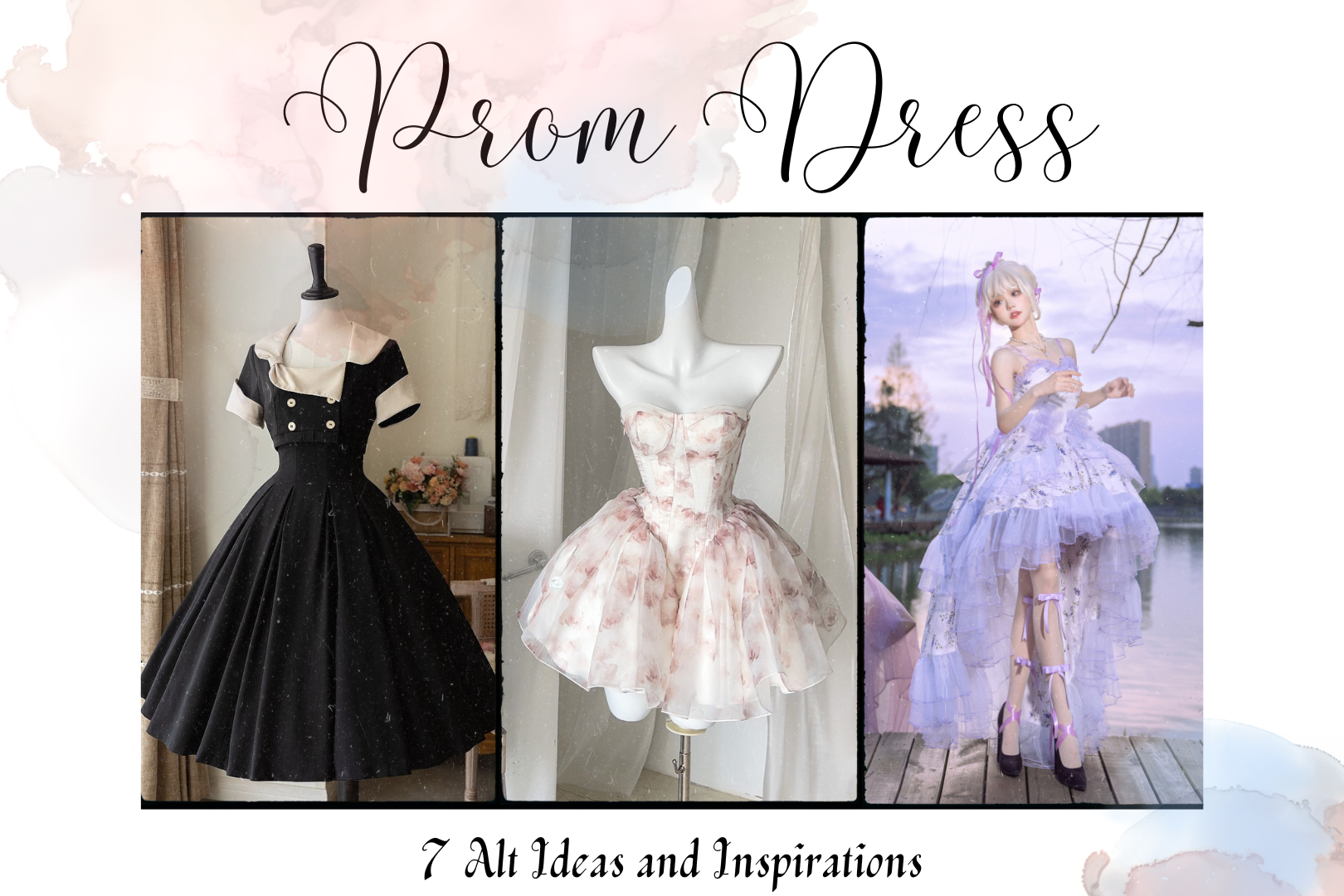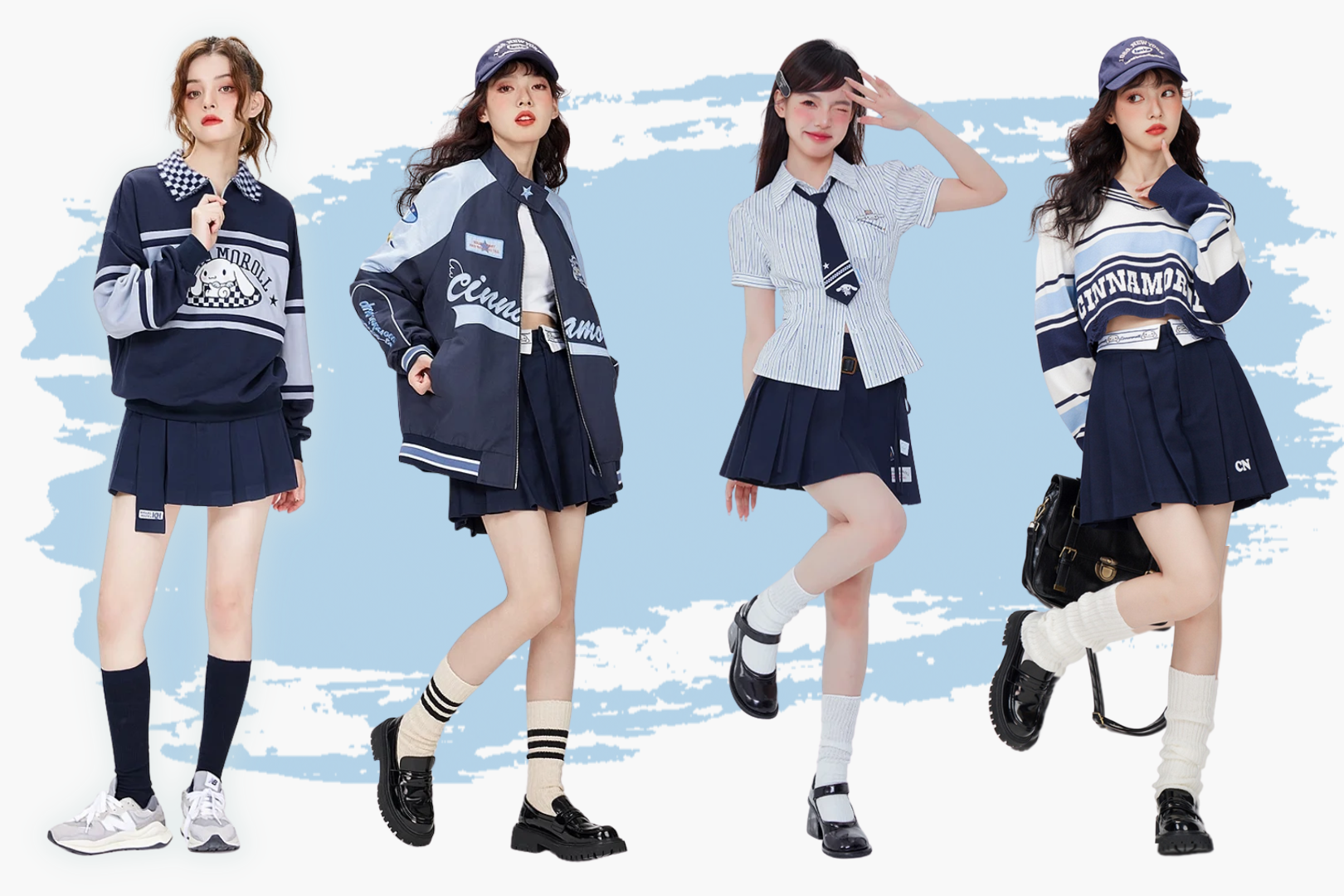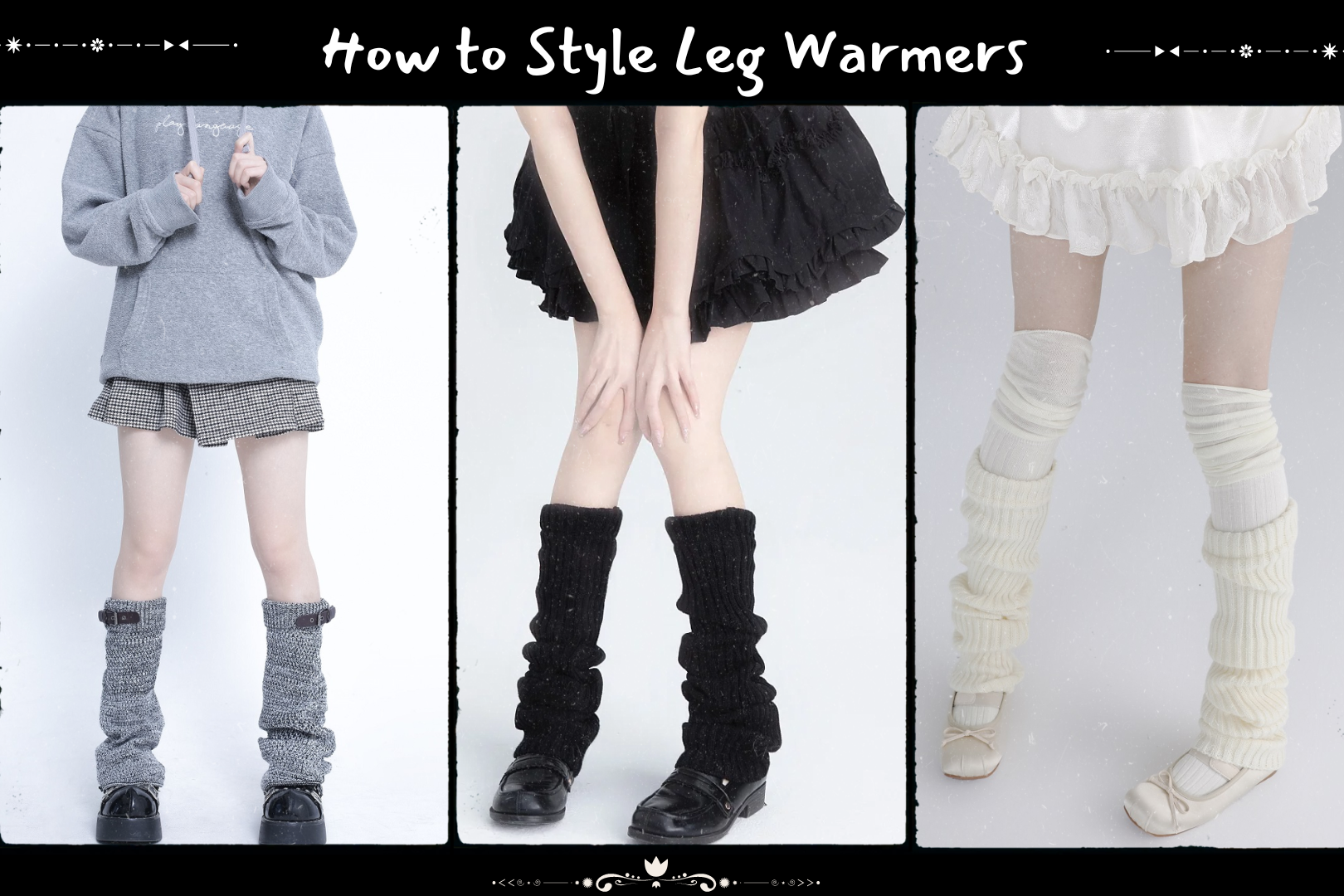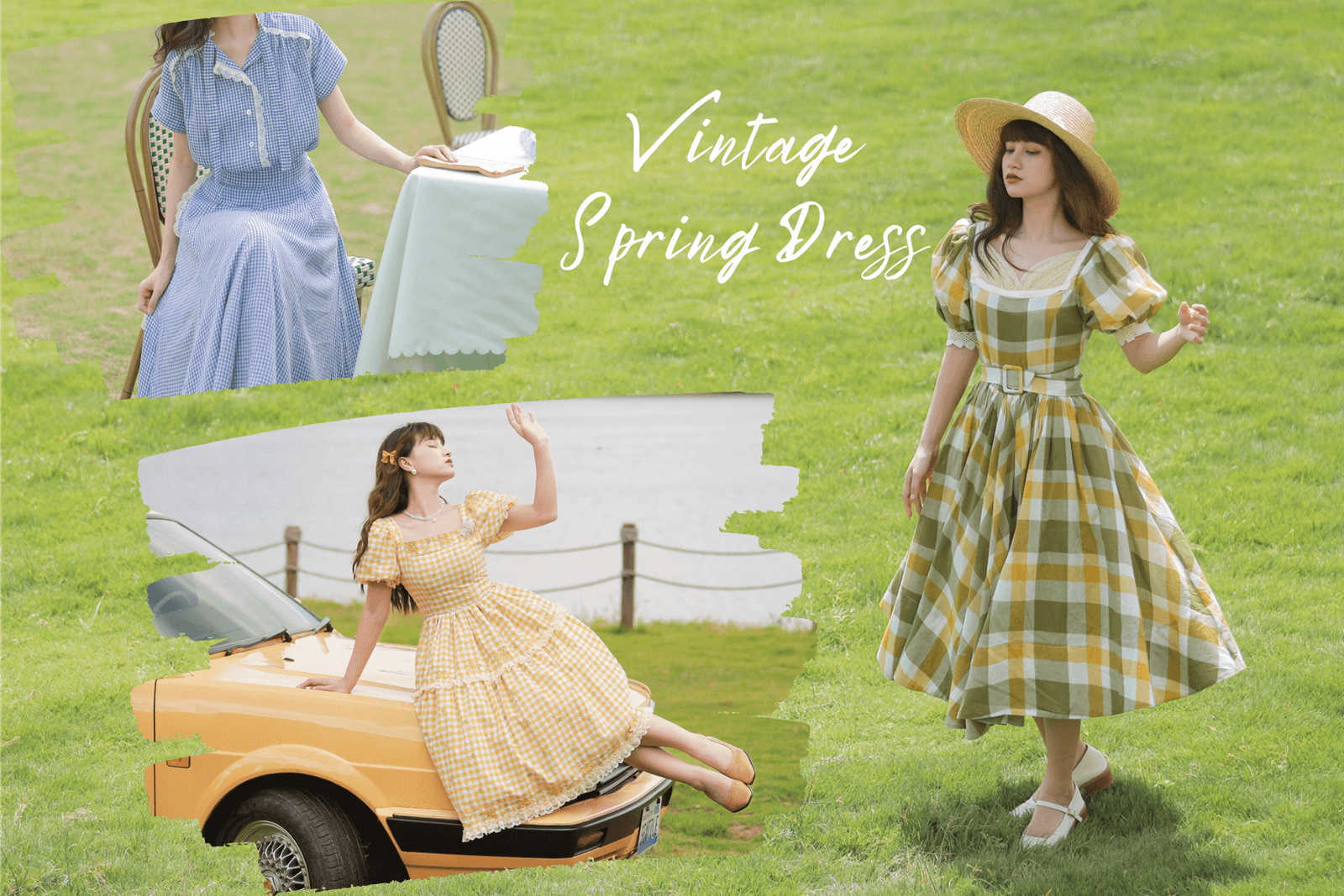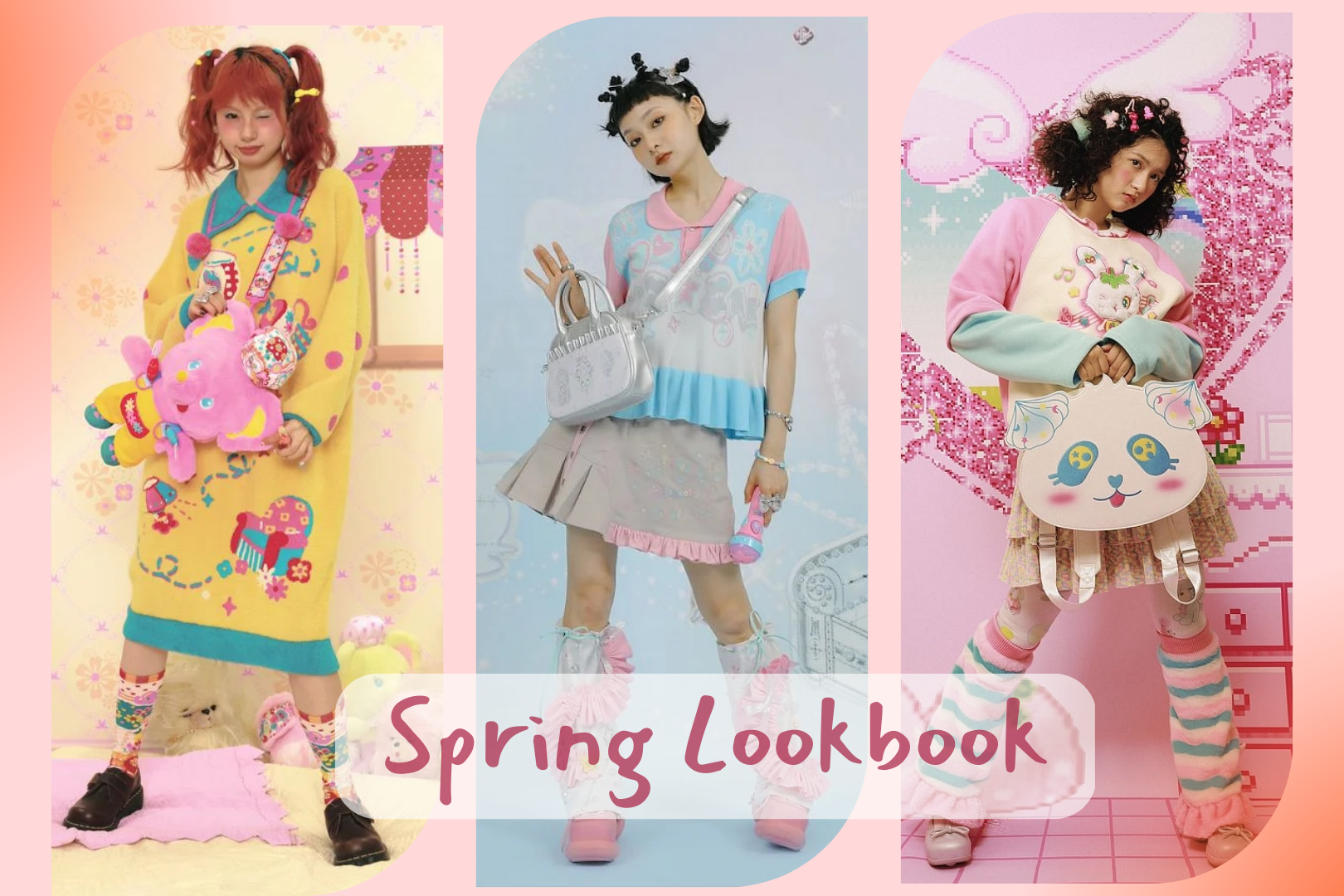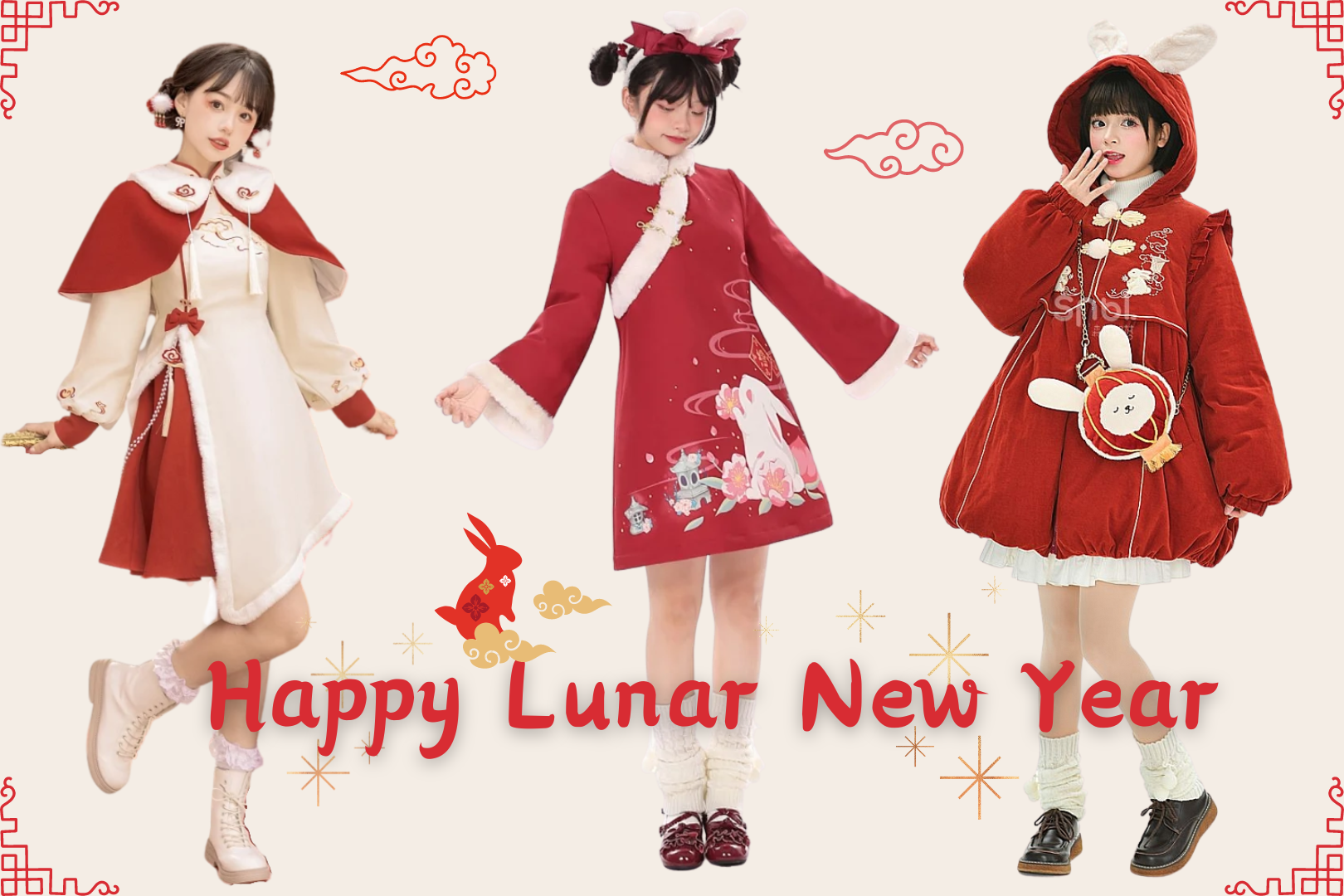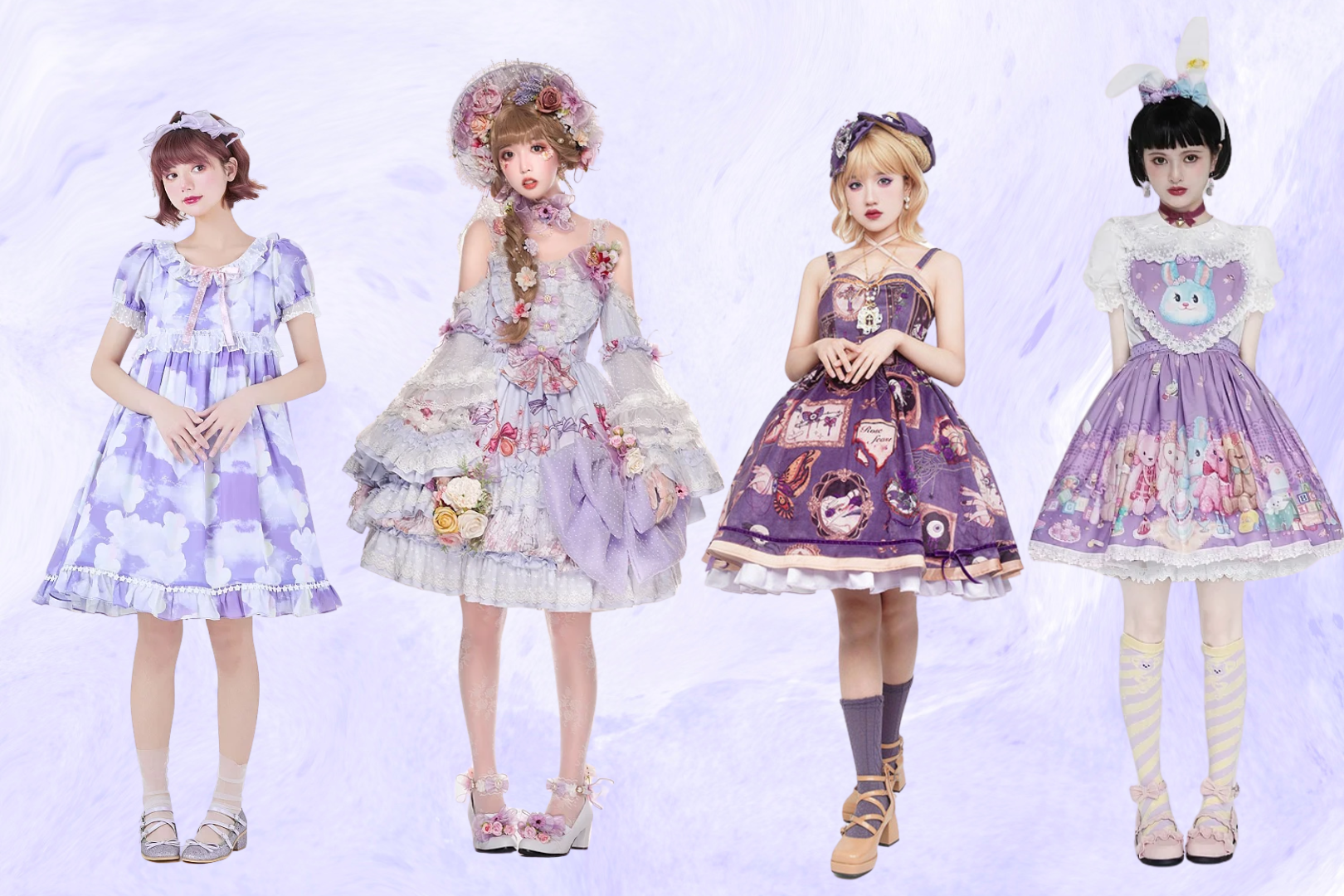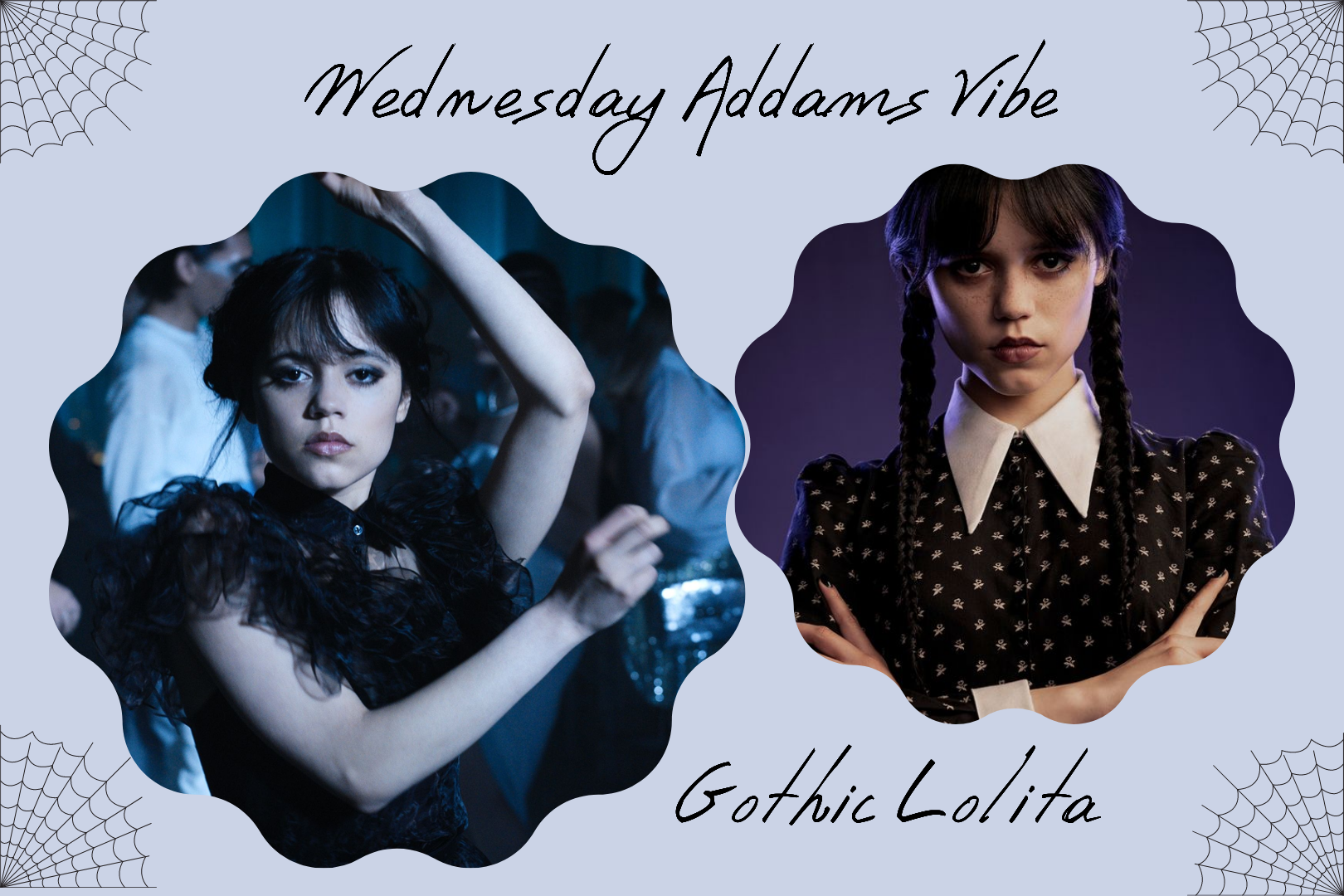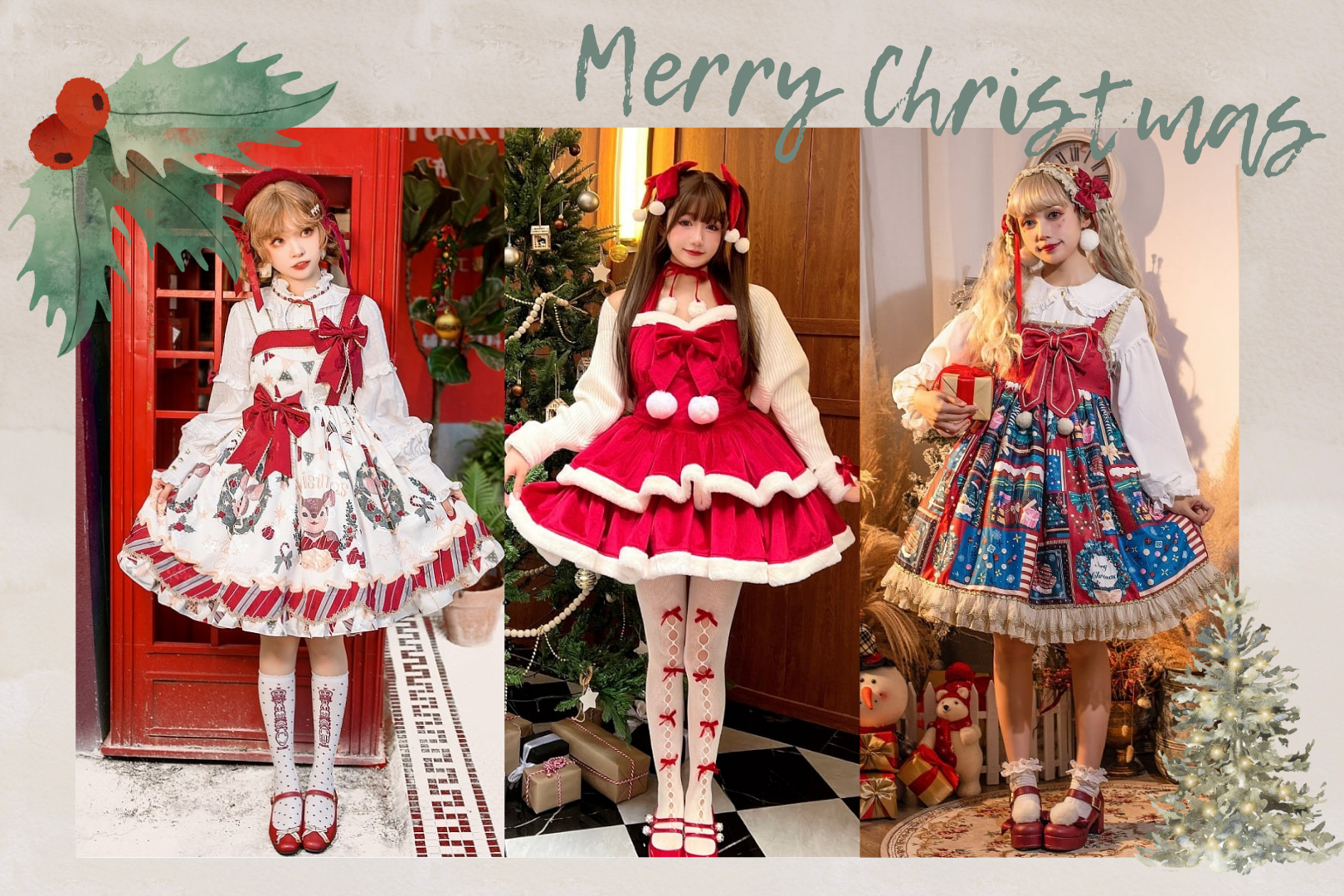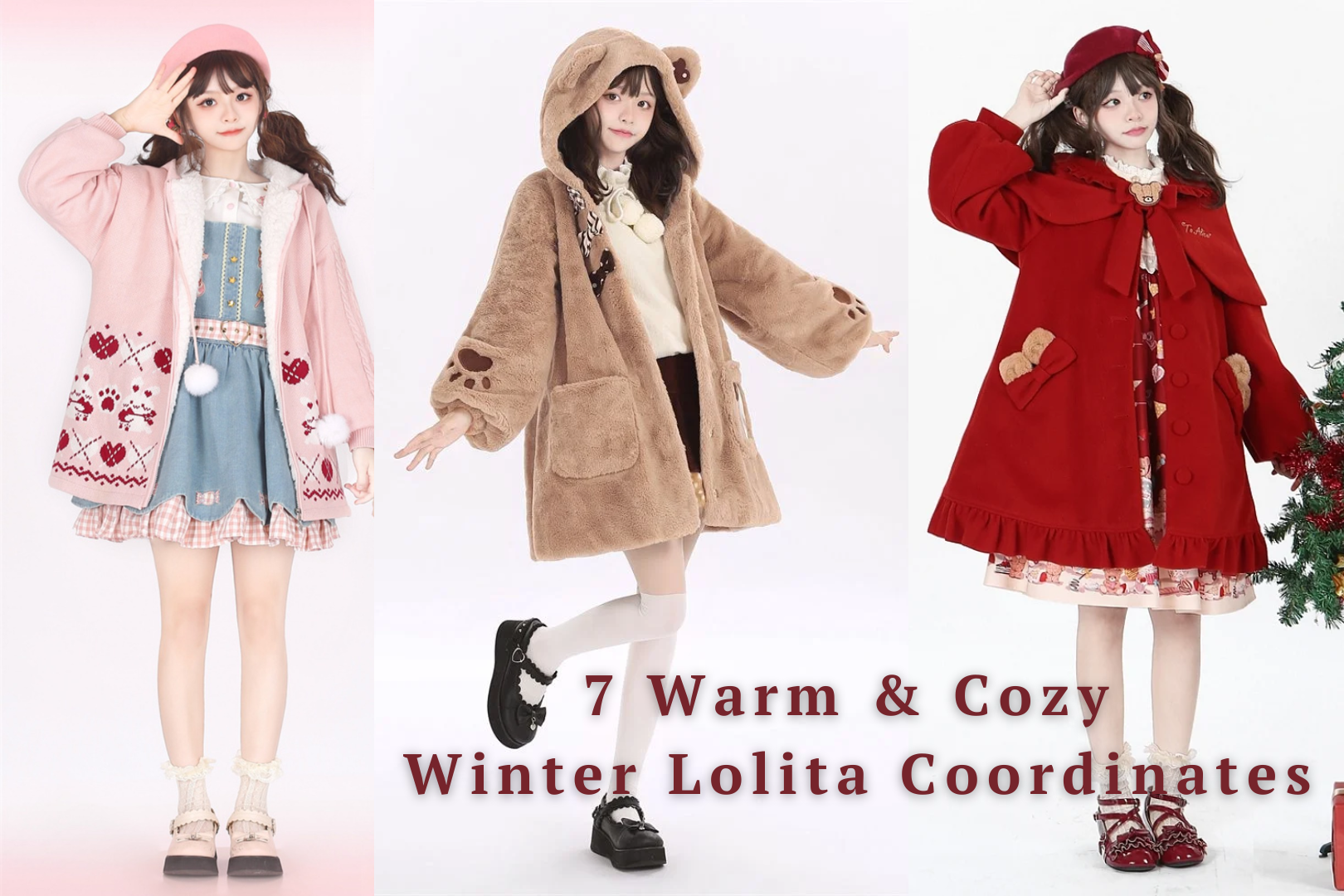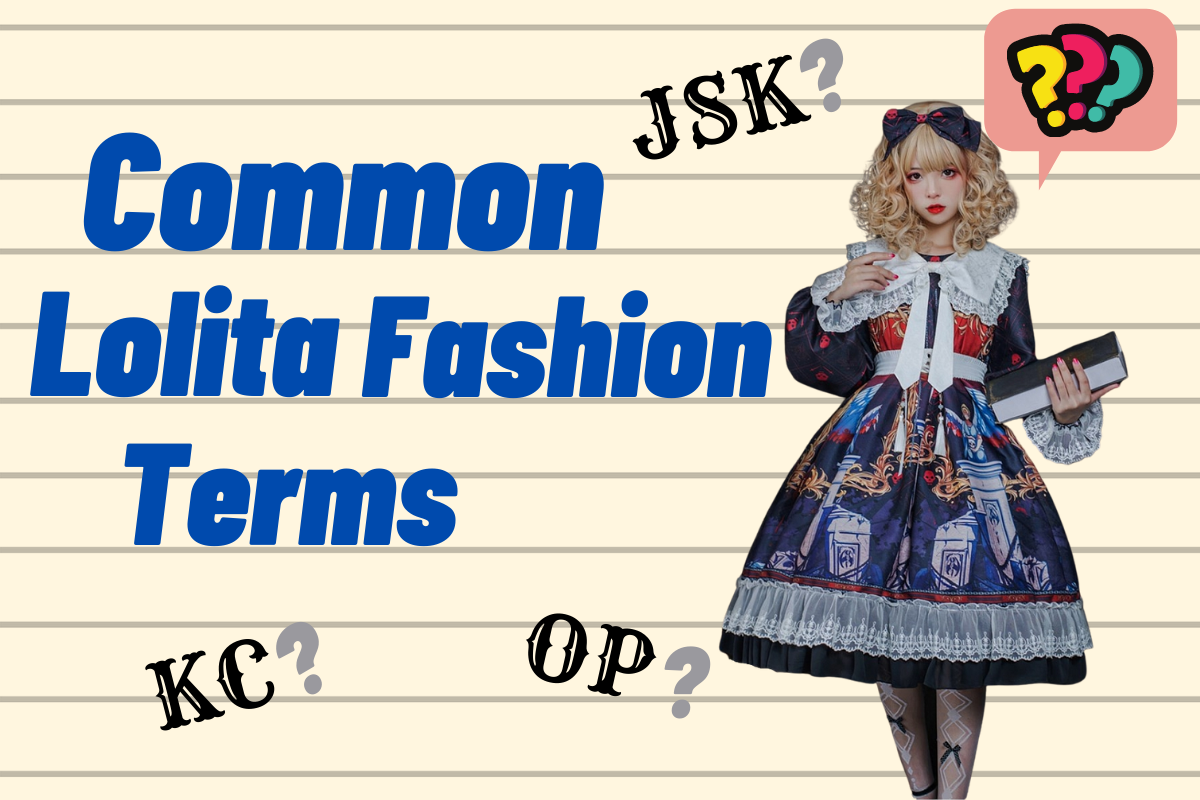
In today's blog, I'll go over some common Lolita fashion terms and explain to you what they mean.
As someone new to Lolita Fashion, it's possible that you've never heard of some of these terms before. So, if you're wondering what these words mean, I'd like to explain them to you today!
Whatever your level of expertise, I hope this vocabulary lesson will be helpful to you. Let’s get started!
KC (Kachusha)
Kachusha/Katyusha is abbreviated as KC.
And this is how they appear; it's basically a bow on a headband.
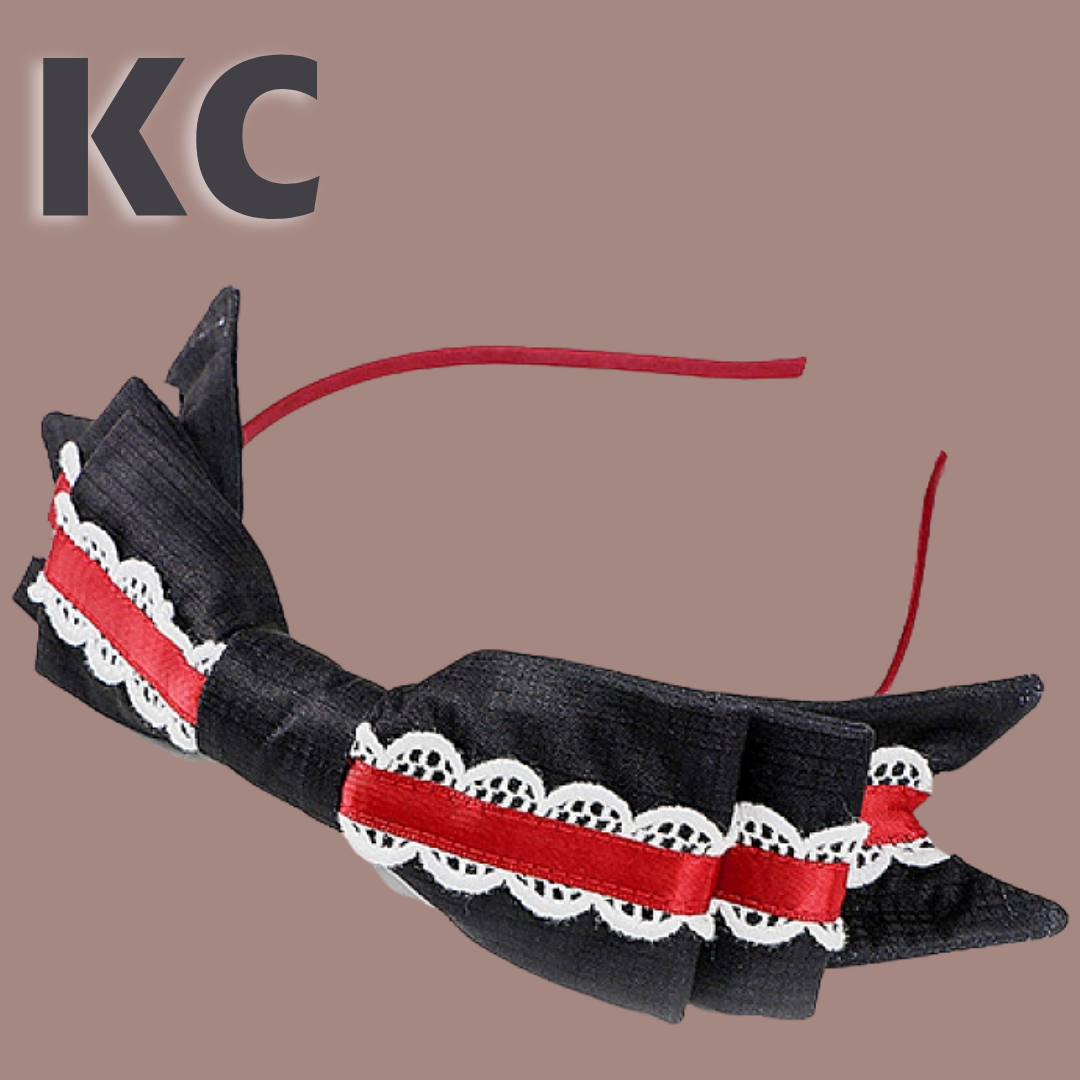
Despite the word's simplicity, Kachusha's history can be really interesting! And it all begins in Japan's Taisho era. During this time, Western culture had a significant impact on Japan. One of those popular influences was a Japanese adaptation of a Russian play (Tolstoy's Resurrection). Matsui Sumako, a young woman of the time and both an actress and singer in this performance, starred as Kachusha, the play's protagonist. Kachusha (カチューシャ) is a Japanese foreign word derived from the Russian word "Kaтюшa." Kachusha is essentially the Russian version of Catherine's nickname or simplified name. In her leading role, she sang the play's theme song, Kachusha's song, and it became extremely popular in Japan. It went on to sell thousands of copies on the final day, making Matsui extremely popular. Naturally, people wanted to capitalize on this popularity. Advertisers and retailers began selling items aimed primarily at women, allowing them to emulate Matsui's style. Eventually, Kachusha head bows were worn the most during this period by women.
This is an actual Taisho period advertisement for head bows.
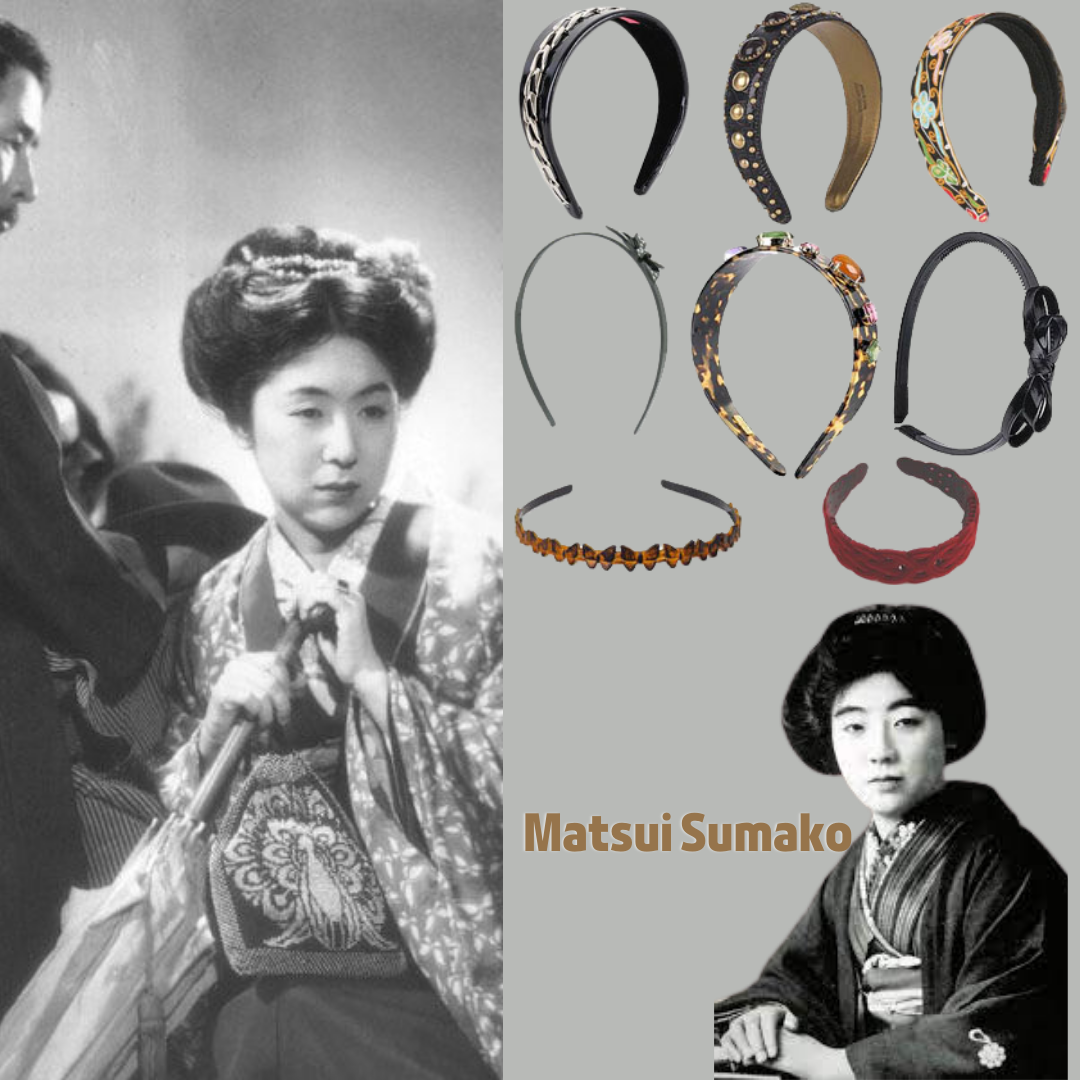
Now those items were primarily accessories — especially a one-of-a-kind headpiece known as the Kachusha head bows.
Within the Lolita community, these accessories are commonly referred to as a head bow. But imagine seeing the term "KC" anywhere else right now, like on a lace market listing or in any other place. In that case, you'll now have an idea about the intriguing logic behind it!
JSK (Jumper Skirt)
And now we'll move on to another acronym!
JSK stands for jumper skirt, and this is how it looks like:
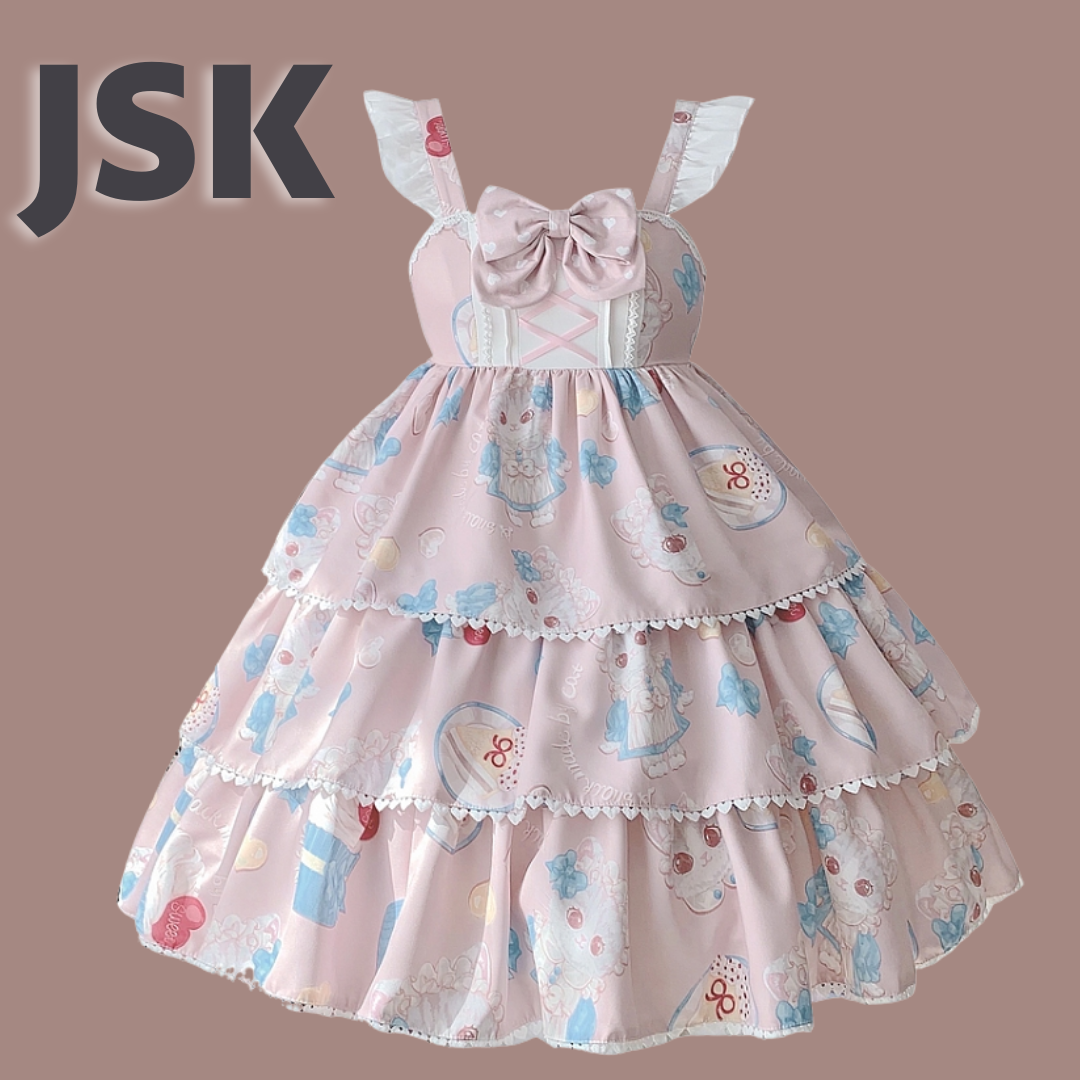
A jumper skirt is a sleeveless dress that is usually paired with a blouse underneath. However, you can also wear a shawl or cardigan. But these days, it is already common that Lolitas don't wear blouses underneath their JSKs in the summer. To which, as far as I've seen, is still often frowned upon.
But if you don't want to wear a blouse, you can do so because you're the one wearing the dress!
OP (One-Piece)
Our next term is OP, which stands for one-piece.
So, a one-piece is another style of Lolita dress. It's a Lolita dress with sleeves that can be long or short. Since the dress sleeves are already sewn into the garment, there is no need for a blouse. If they have long sleeves, it will be ideal for the winter. Also, suppose you simply do not want to deal with the hassle of putting together extremely complex coordination. In that case, one-piece can be perfect because it eliminates the need for a blouse.
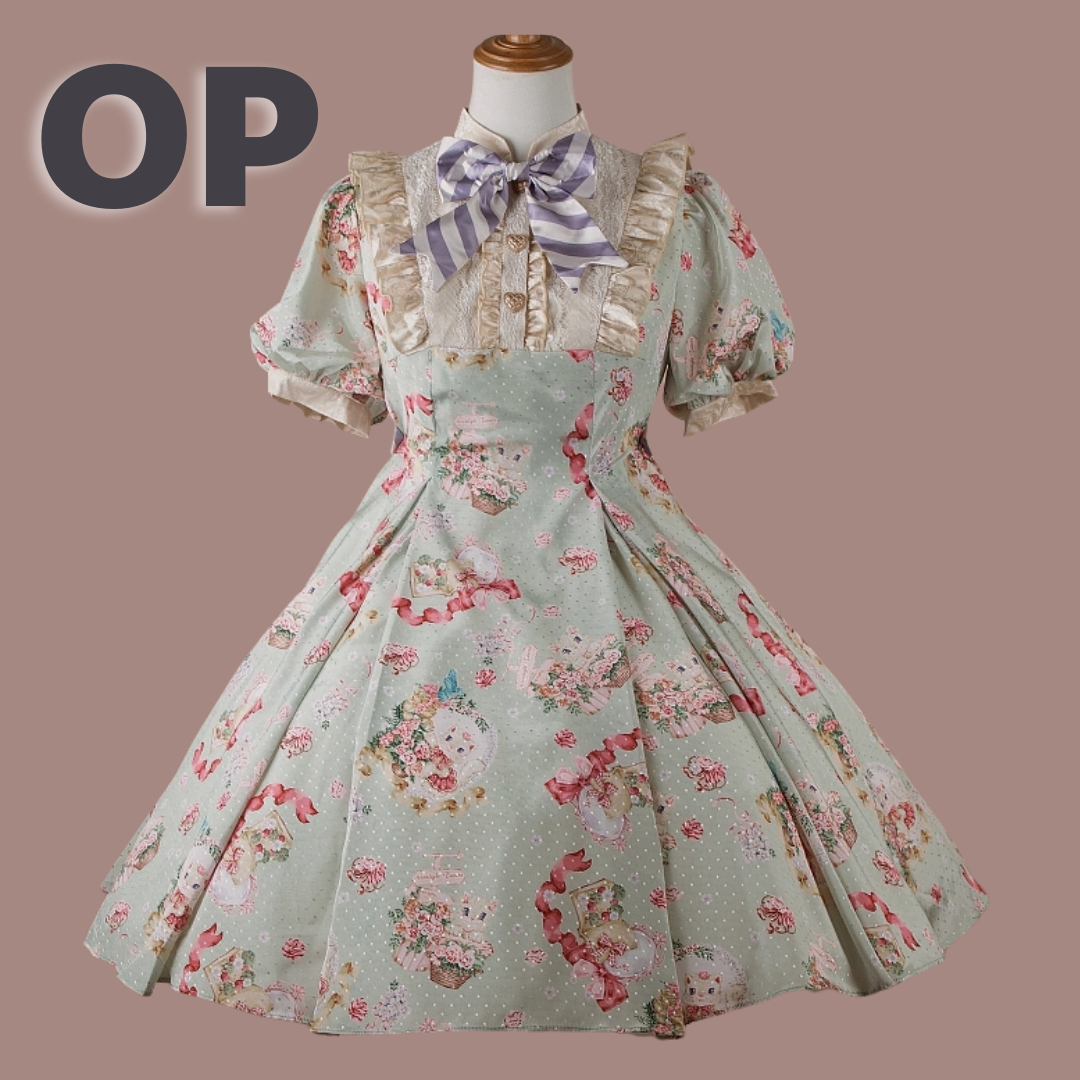
Salopette
Next on our list is a salopette, and here is a picture of one:
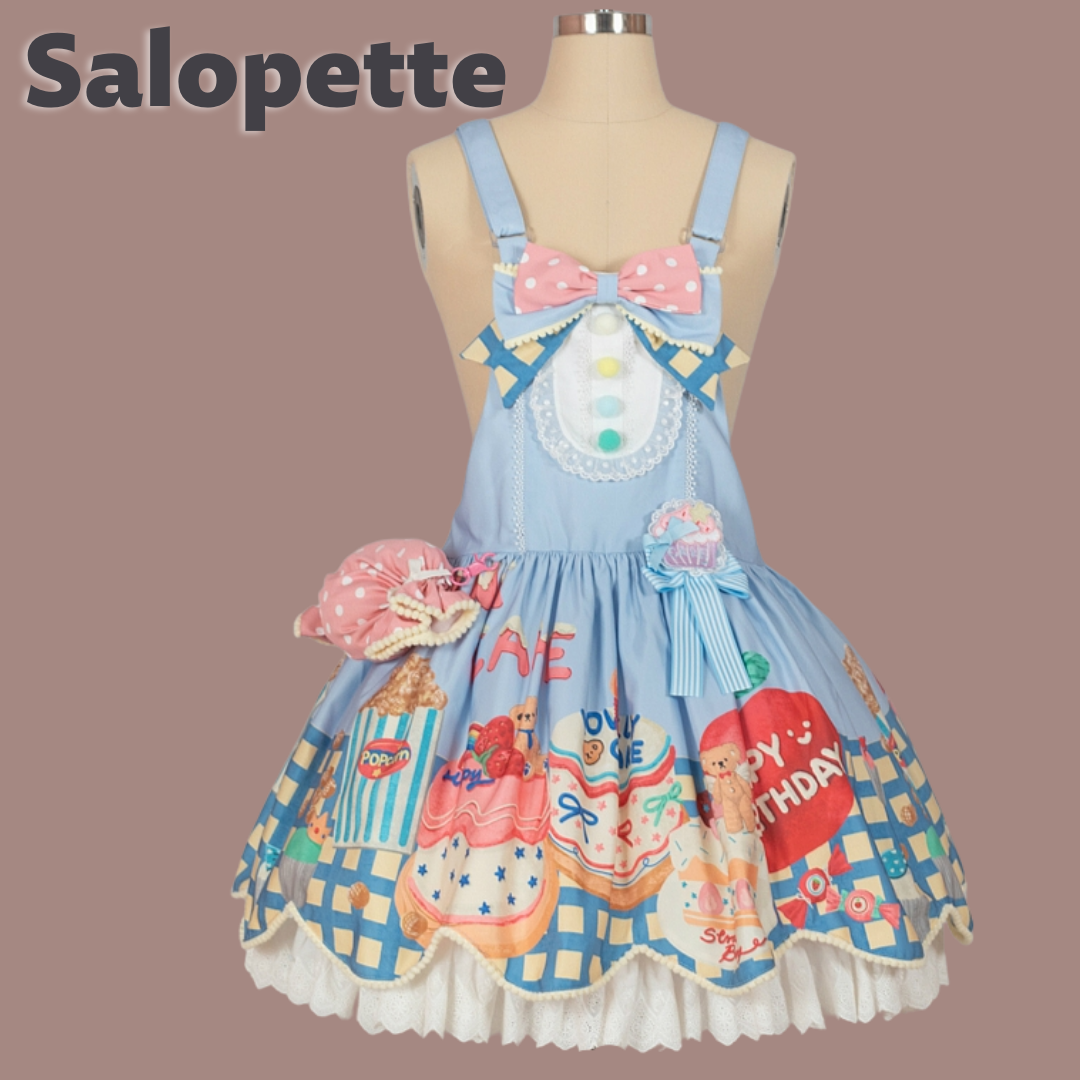
The typical salopettes silhouette will have a shorter skirt and the bodice has more of an overall bodice with adjustable straps at the top. I think a salopette is great for a more casual Lolita look. A lot of the time I see them styled in a more Fairy Kay Lolita twist because they are more of a cutesy less formal version of your typical JSK or OP Lolita dress.
The salopette silhouette is known for having a shorter skirt. The bodice is more of a one-piece design with adjustable straps at the top. In my opinion, the salopette is the best choice for a more casual Lolita look. I frequently see them styled in a Fairy Kei Lolita twist because they are a cuter, less formal version of your typical JSK or OP Lolita dress.
The differences between a JSK/OP and a salopette:
An OP is a dress with sleeves, whereas a JSK is a dress without sleeves typically worn with a blouse or something to cover the shoulders and arms.
A salopette is a somewhat peculiar attire similar to a JSK. Still, it is more casual and is commonly seen outside of Lolita. According to Lolita-tips, they're usually a little shorter, have a longer bodice, and are less fitted.
SK (Skirt)
SK stands for Skirt.
A skirt is a skirt, and there are no hidden meanings to be found here. With that out of the way, there are three kinds of skirts:
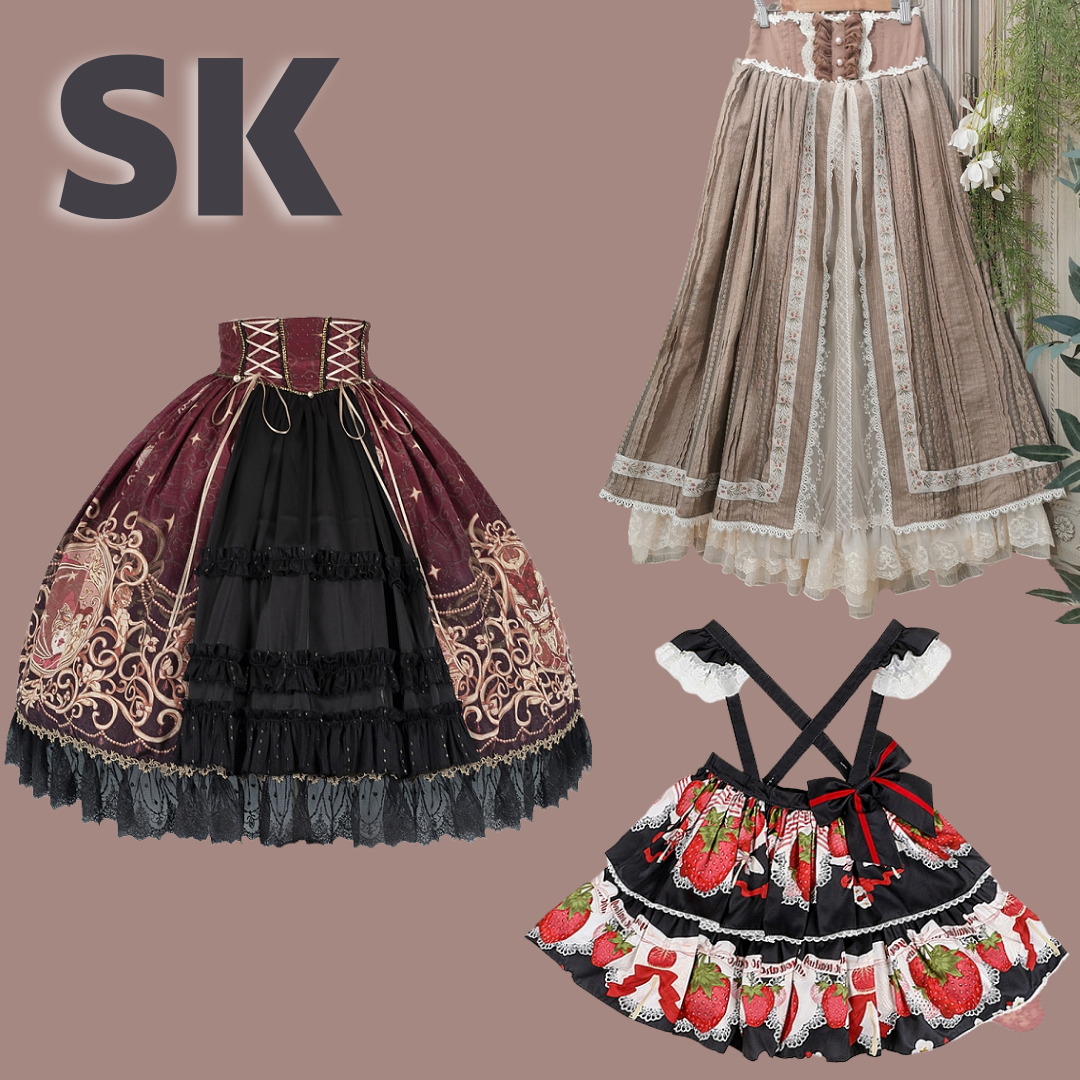
The waistlines of these skirts differ slightly. The left one has a thicker waistline and some lacing in the back, making it a little unique. Most of the other skirts we see will have only an elastic waistband or a slightly thinner waistband with no other lacing details. There are a variety of options in the waistband, but usually, a skirt is a skirt.
Cutsew
And our final term referring to dresses is Cutsew. Cutsew is an abbreviation for cut and sewn. Sewn by serger machine, cutsew T-shirts and other garments are generally made of a stretchy fabric and sewn together.
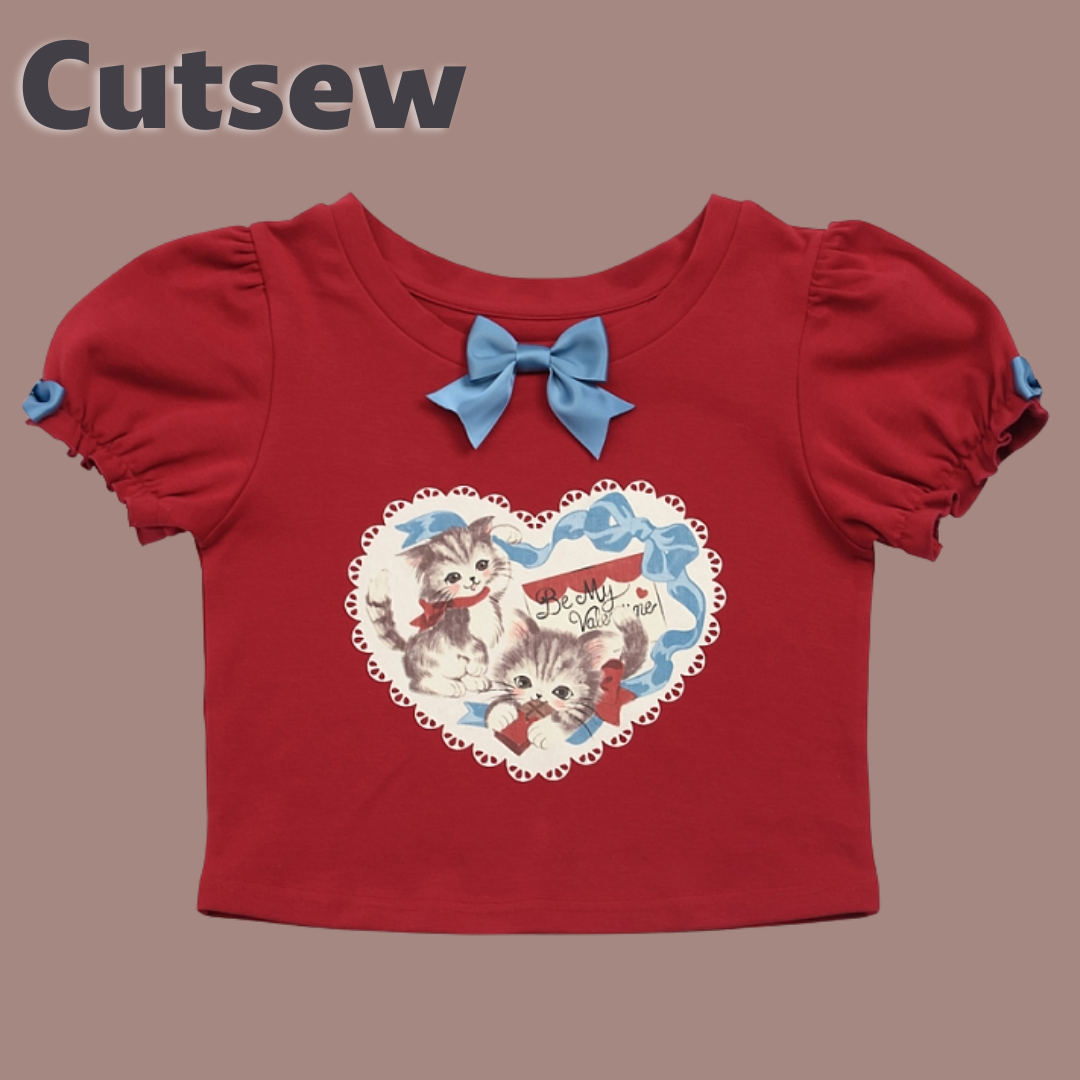
The differences between a Cutsew and a T-shirt:
Cutsews are generally more tailored than a regular T-shirt. They might have cap sleeves or puffed sleeves and they usually have a little more detail in the design. This would be a good example of a cutsew for casual Lolita or that could just be worn with a casual non-lolita outfit.
Cutsews are more tailored than a standard T-shirt. They may have cap sleeves or puffed sleeves, and the design is usually more detailed. This would be an excellent example of a cutsew for Casual Lolita. It could simply be worn with a casual non-lolita outfit.
In comparison to a typical Lolita blouse, it's really quite plain. Nonetheless, it has cute puffed sleeves and a lovely ruffle at the bottom to help give it a Lolita feel, unlike a regular t-shirt. According to Lolita-tips, T-shirts can be worn with casual Lolita. Still, they must be well-fitted and in good condition.
Lolita Fashion's Cutsew is primarily made of jersey fabric. Jersy is a super-comfortable knit fabric. It is a more casual option that can refer to a variety of items in the Lolita fashion.
A typical cutsew:
A typical cutsew is simple, with poofy short sleeves, neckties, and perhaps adorned with a Lolita motif print. Cutsew dresses, which are also very plain-looking, are also sometimes sold in stores. -lolitafashion.fandom
As a result, a cutsew can refer to either a T-shirt or a dress. Regardless of the cutsew's style, they are an excellent option for more casual Lolita wear. A cutsew, as shown in the images below, can be a great option to pair with a skirt/salopette/JSK for a more casual look.
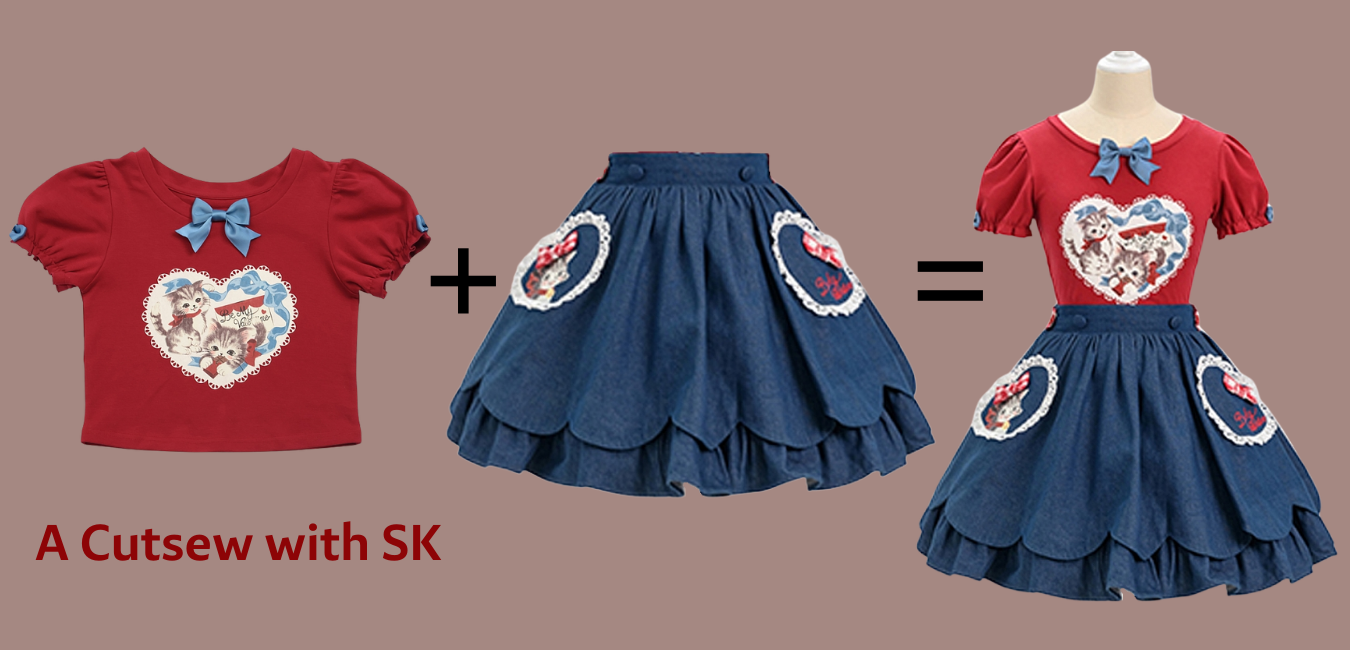
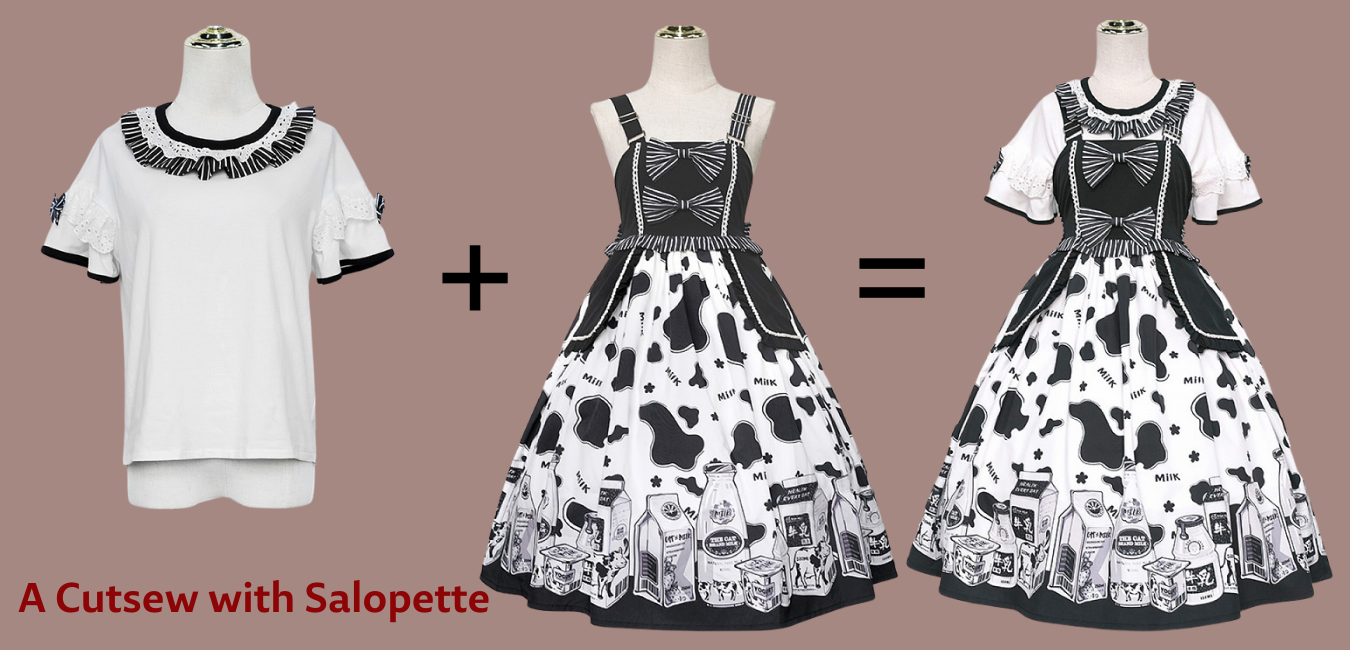
The differences between a Cutsew and a blouse:
A cutsew is also more comfortable than a button-up blouse. If you live in a hot and humid climate, a cutsew Lolita shirt is an excellent wrinkle-resistant option. A cutsew Lolita shirt, on the other hand, is typically made of cotton, which some people prefer in hot weather. They are, in my opinion, a little thicker / warmer than the average blouse.
Blouse
Blouses come in a variety of styles. Peter-pan collars and puffy long or short (sometimes detachable) sleeves are the most common features.
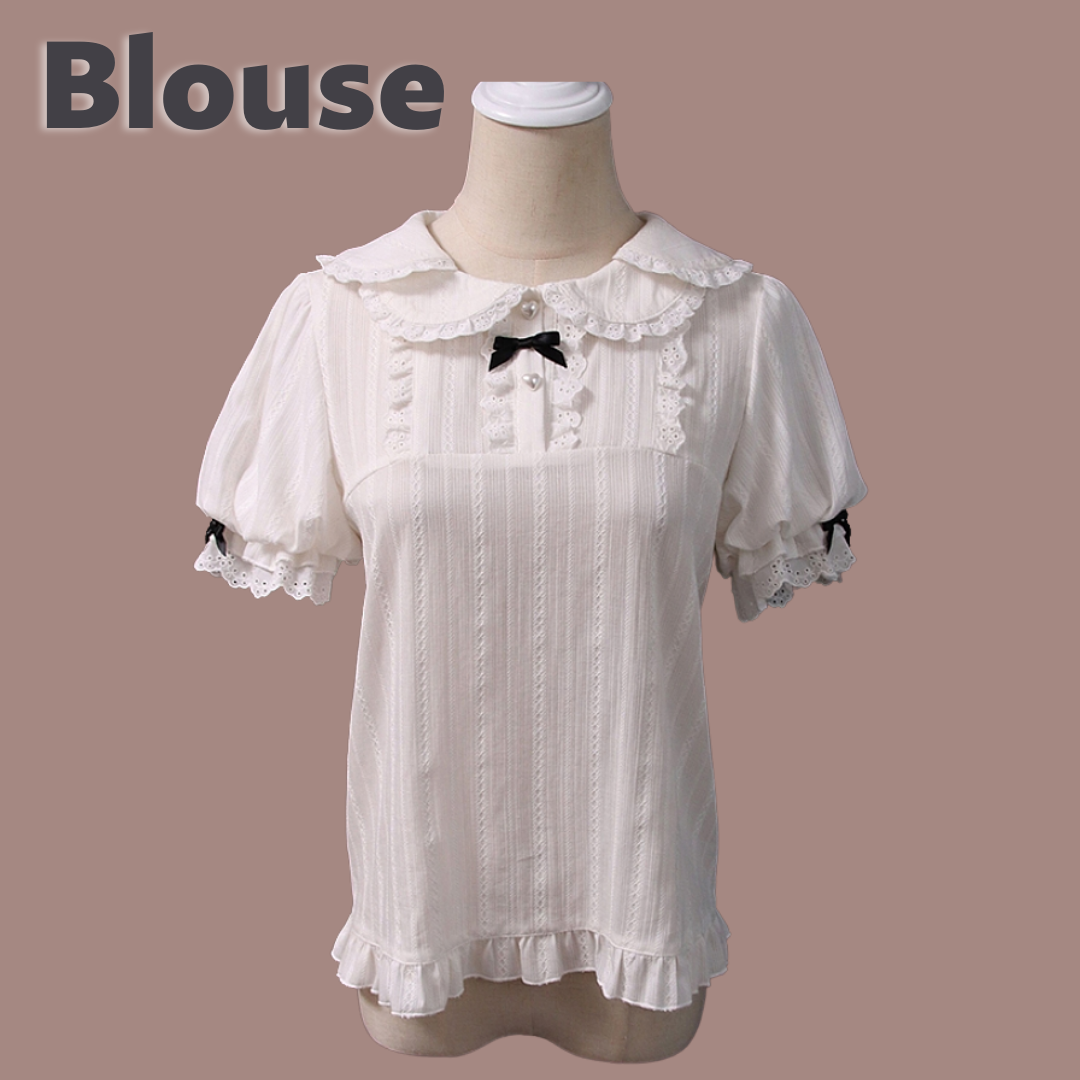
Lace, frills, brooches, jabots, neckties, bows, special-shaped buttons, embroidery, and sometimes pearls or other decorations can be found on Lolita blouses. Shirring (a form of gathering) is sometimes used to create unique shapes that will also fit bigger-sized ladies. They're usually paired with a skirt or a JSK.
Like the one shown below, a blouse designed for Sweet Lolita may be overly embellished with lace, frills, and ribbons. The other blouse styles are usually more subdued. High collar blouses are more likely to be found in Classic Lolita than peter-pan collar blouses.
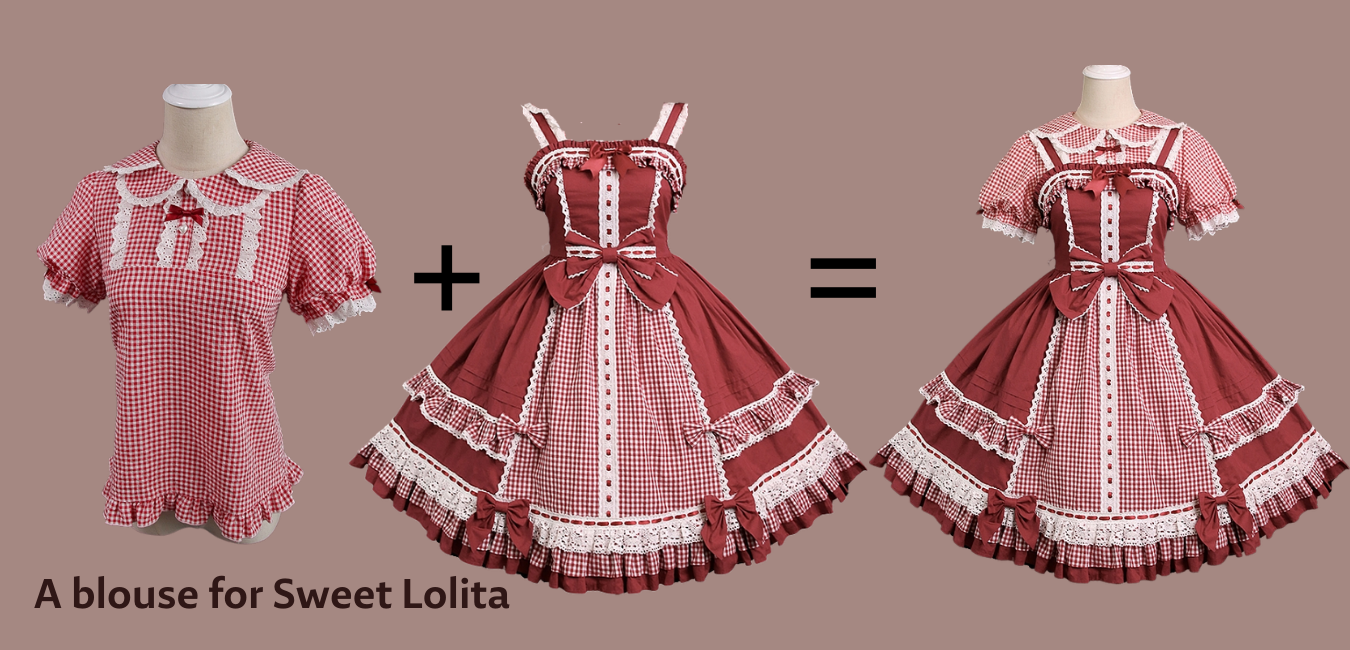
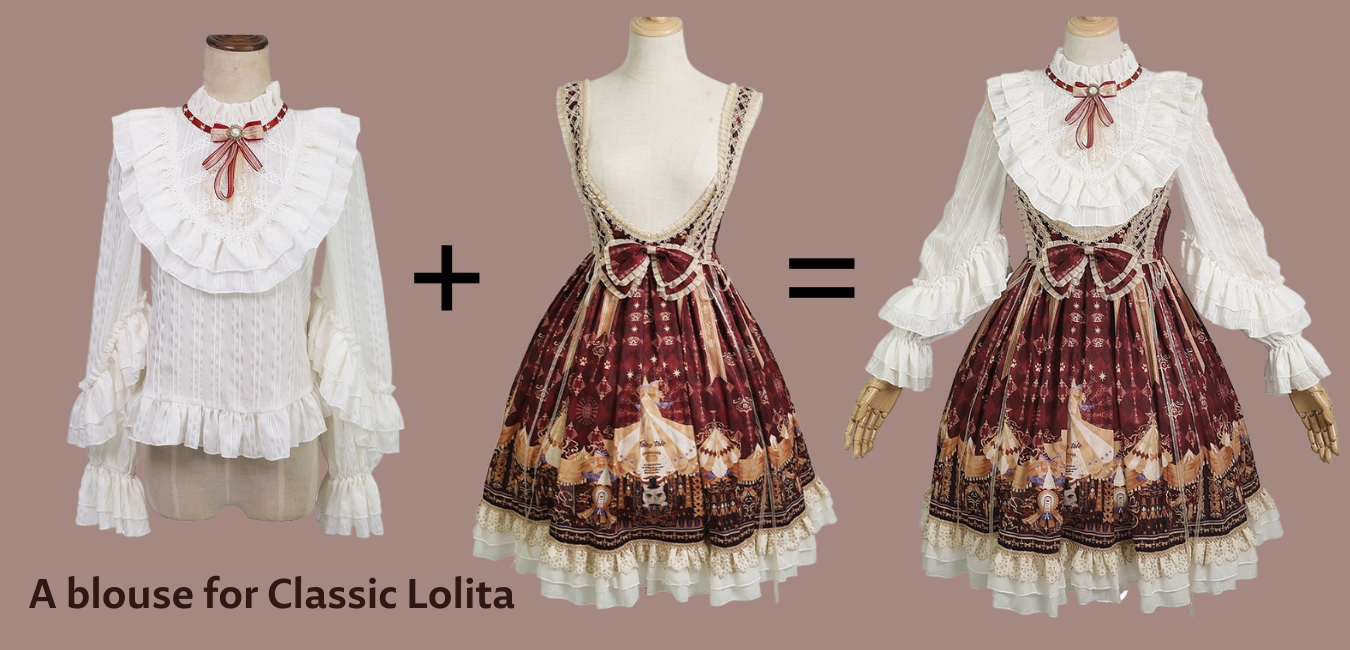
Bolero
Bolero is like a shortened jacket but more tailored. The front of this waist-length jacket is open, and the sleeves are long (sometimes short), and it may be adorned with borders at times. It is frequently worn at a high-end evening event.
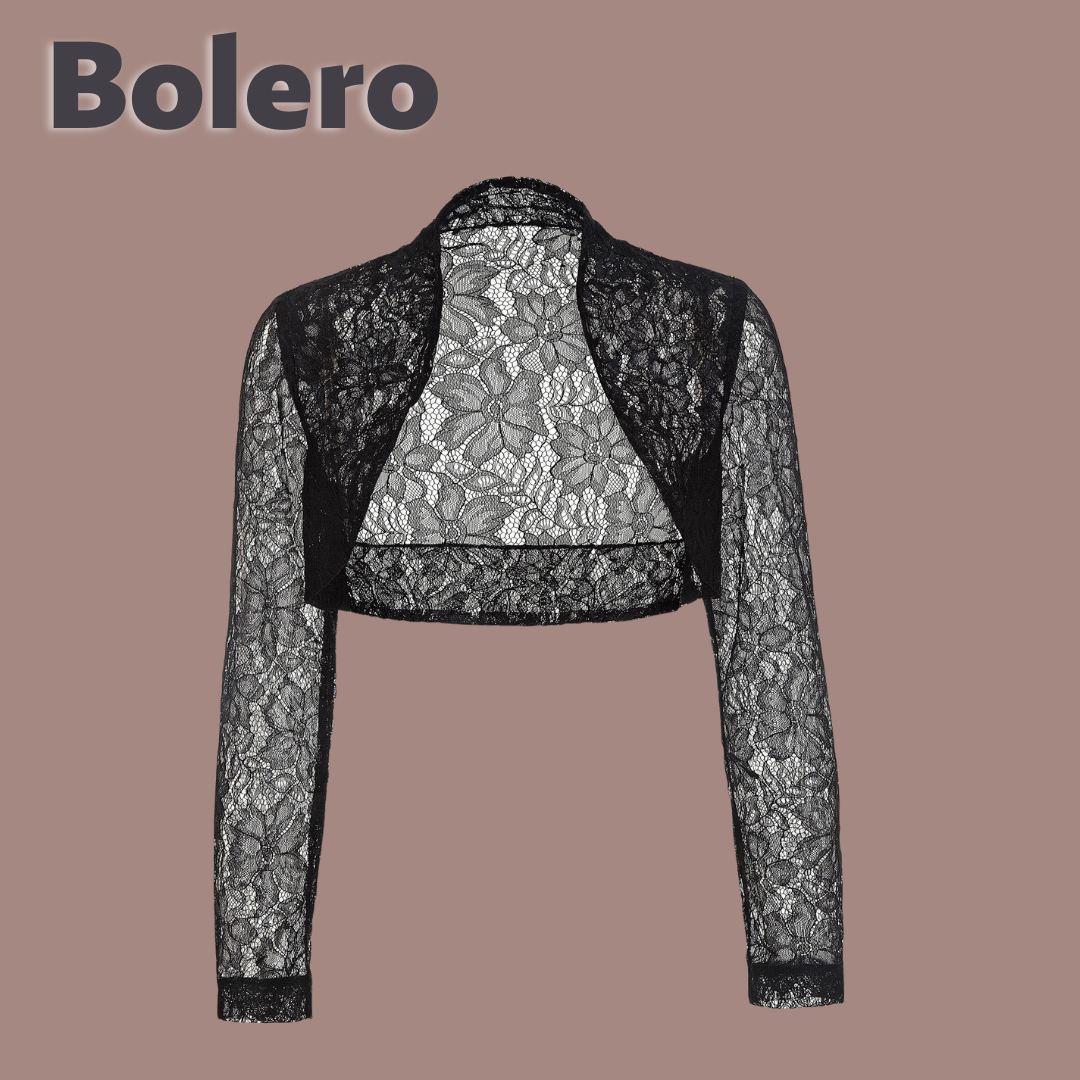
The Bolero was first used in bullfighting before being adopted by women's fashions. From the 1850s to 1860s, this fashion style of the Bolero was carried to the British noblewoman's elegant crinoline style.
Later on, it was reintroduced into women's fashion in the 20th century and was worn with cocktail dresses and summer jumper skirts. Until now, the Bolero has been well suited for bridal gowns, evening gowns, and holy communion attires.
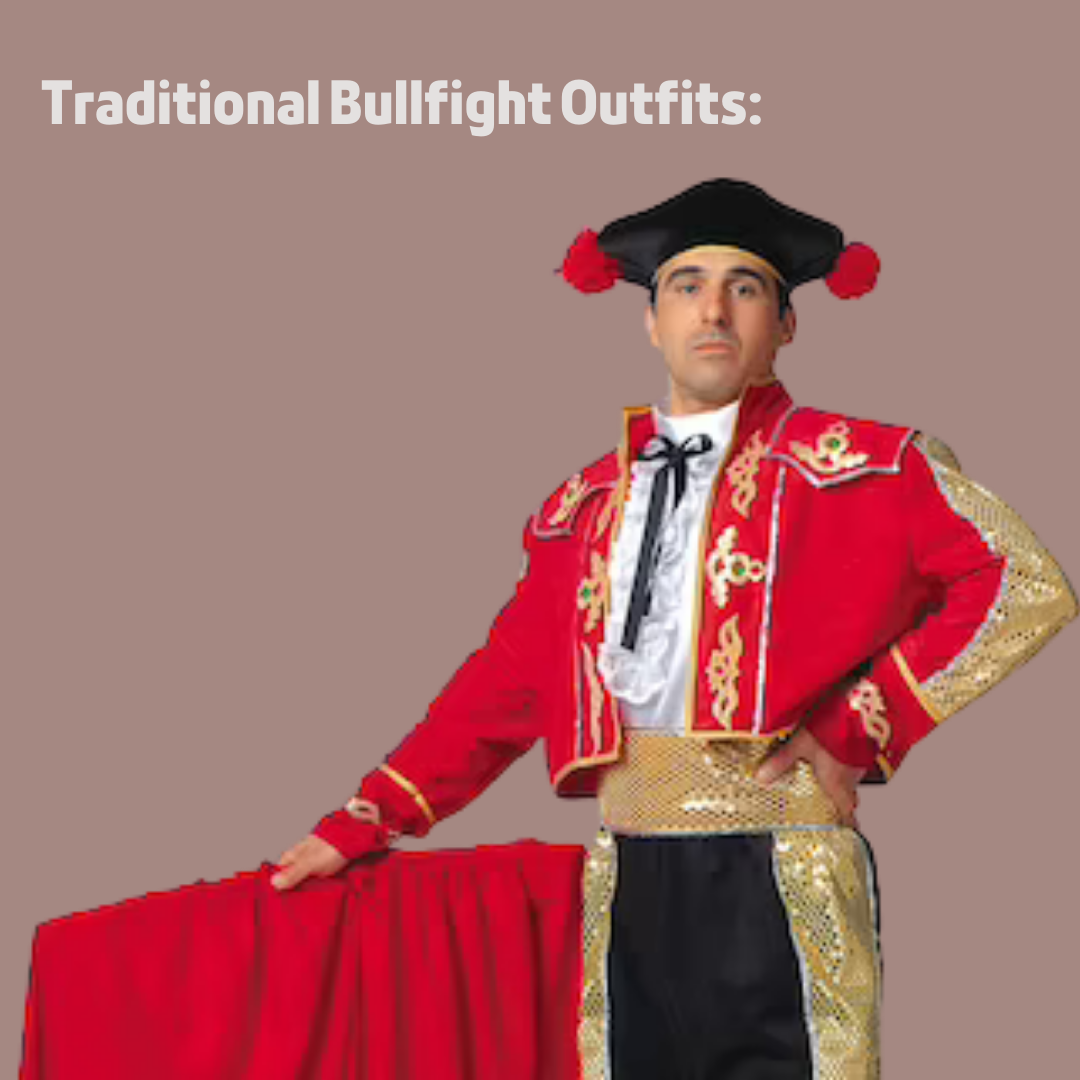
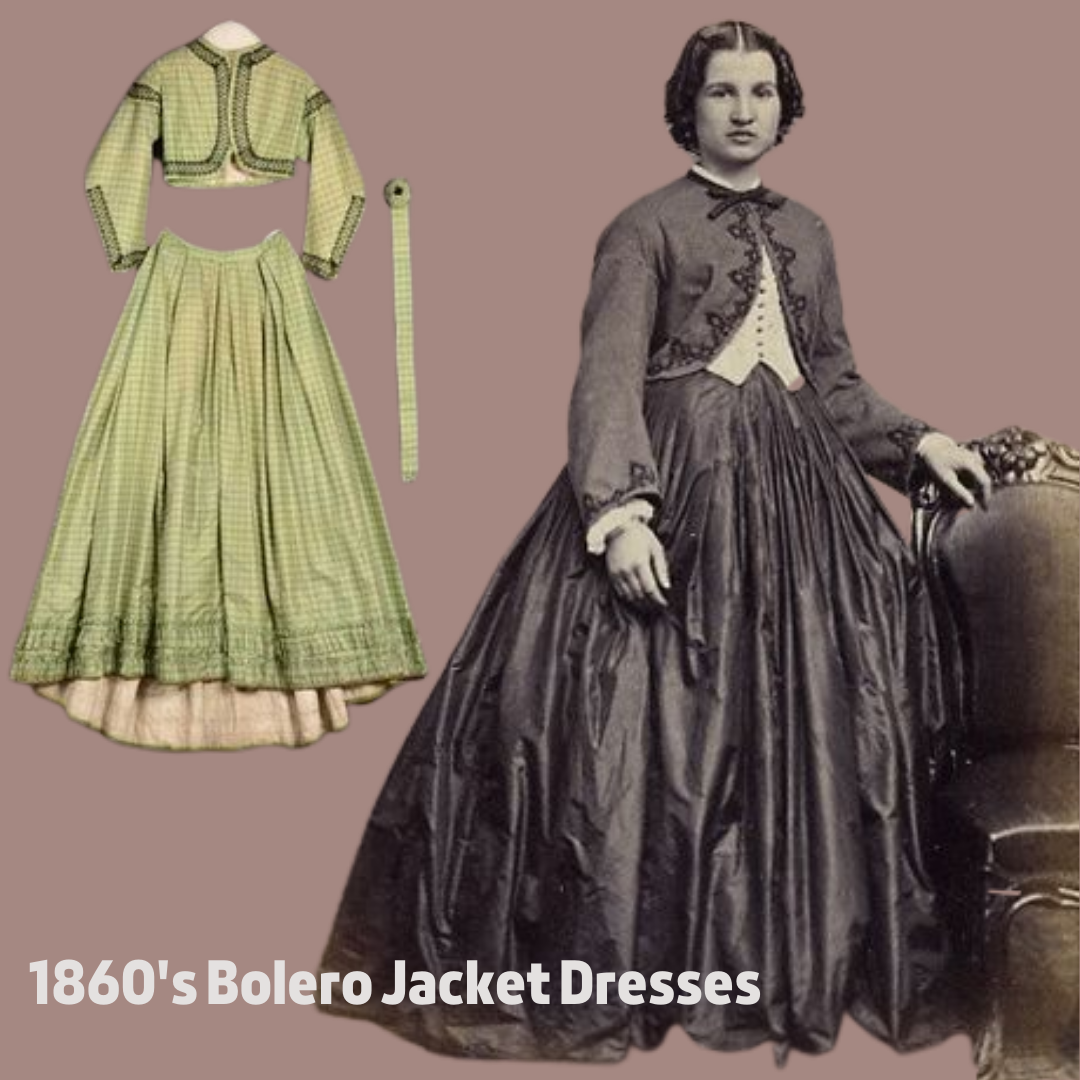
In Lolita fashion, it is often paired with a JSK or a skirt and a blouse. It is a transitional piece between a jacket and a vest that can be very elegant. It may be referred to as a cutaway or an overcoat, depending on which term is easier.
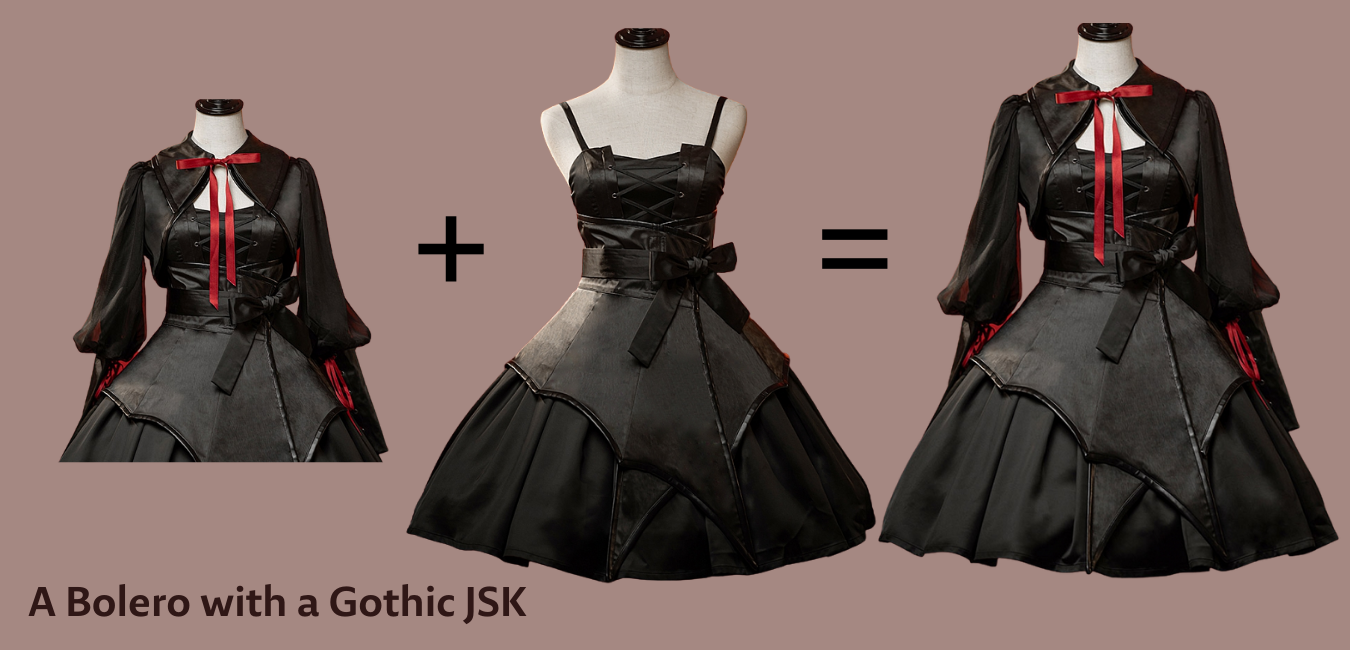
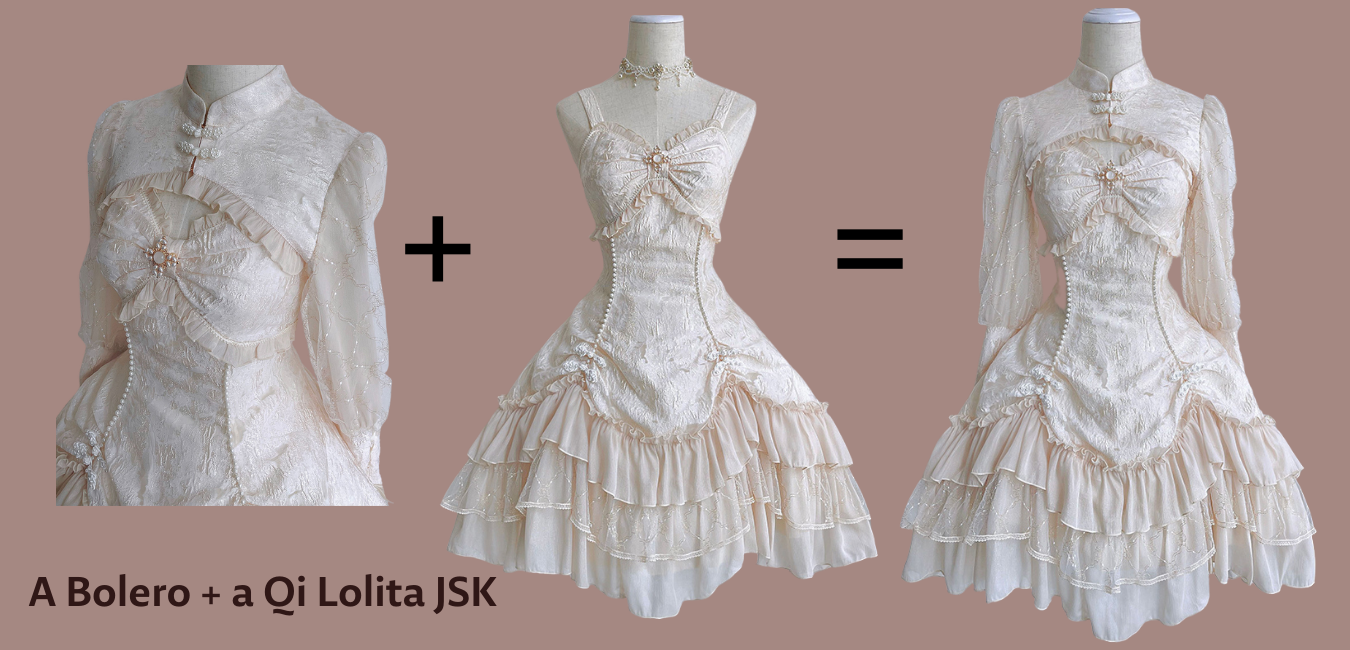
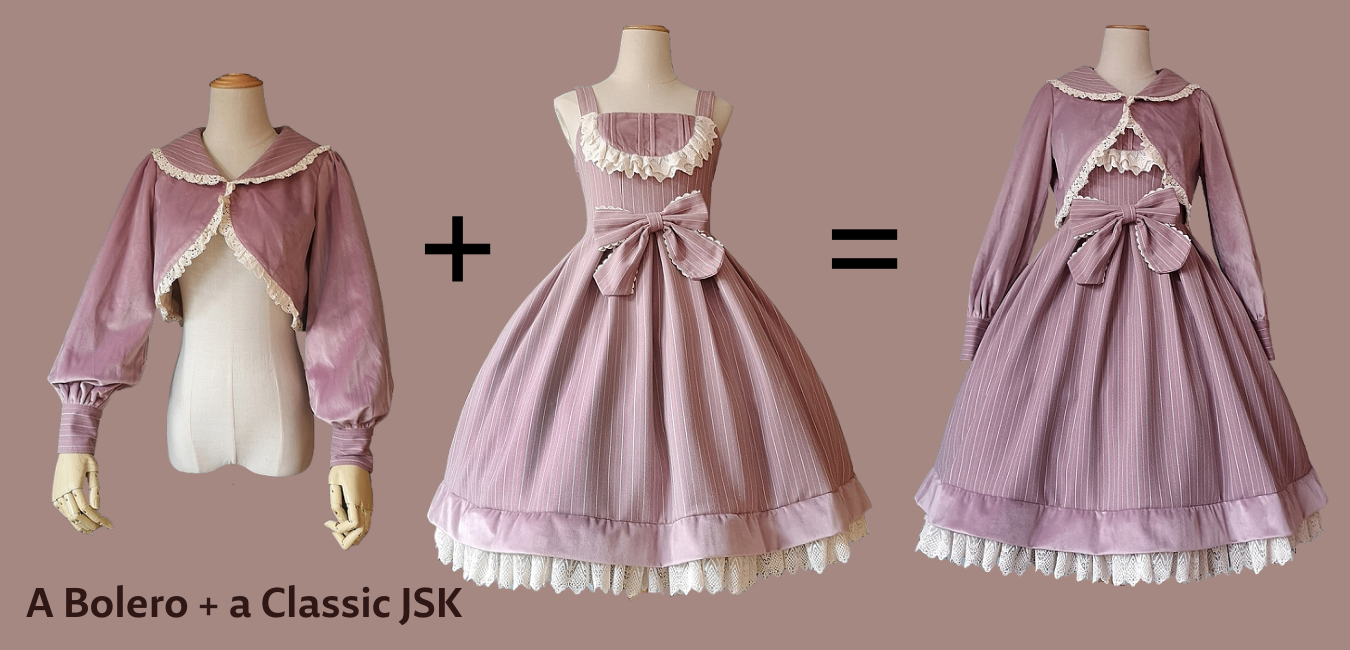

Difference – Bolero v.s. Shrug v.s. Cardigan:
A shrug is similar to a "cropped cardigan." It can also be used as a stylish blanket replacement if you get cold at work
Boleros are a little longer than shrugs. They are frequently referred to as a "shortened jacket." They also have a more structured appearance than the shrug. Even so, like the shrug, the Bolero is an excellent way to jazz up your outfit! Boleros are specifically designed to be worn for a more formal appearance. It is often worn with an evening cocktail or maxi dress. Women nowadays wear them with jeans and a t-shirt for a fun dress-up, casual look. They also come in a variety of fabrics, including knit, fur, and even feather trim! Boleros can really provide you with endless options and styles! -By Fashion Battle: Bolero Jacket VS Shrug
Shrug is a cropped, tight-fitting cardigan-like garment that is only worn by women. Only the arms, back, and shoulders are covered by shrugs. Shrugs may have a single button or a code that connects the two ends. Shrugs are slightly shorter than cardigans, falling just below the bustline.
Cardigan is a knitted garment with a front opening. Both men and women wear cardigans. Cardigans wrap around the entire upper body, including the arms. Some cardigans have openings with zips or buttons. Cardigans are longer and fit closer to the waist or hips.
Shrugs and cardigans are two types of outerwear that are worn over other clothing. While both of these garments have a front opening, there is a distinction between appearance and use. The key contrast between a shrug and a cardigan is that shrugs only cover the arms, shoulders, and upper back. Cardigans, on the other hand, cover the entire upper body, including the arms. -By Difference Between Shrug and Cardigan
Innerwear
Anything worn under Lolita skirts or dresses to give them a puffy appearance is considered innerwear
Petticoat
A petticoat is used under skirts to gain the poofy Lolita silhouette.
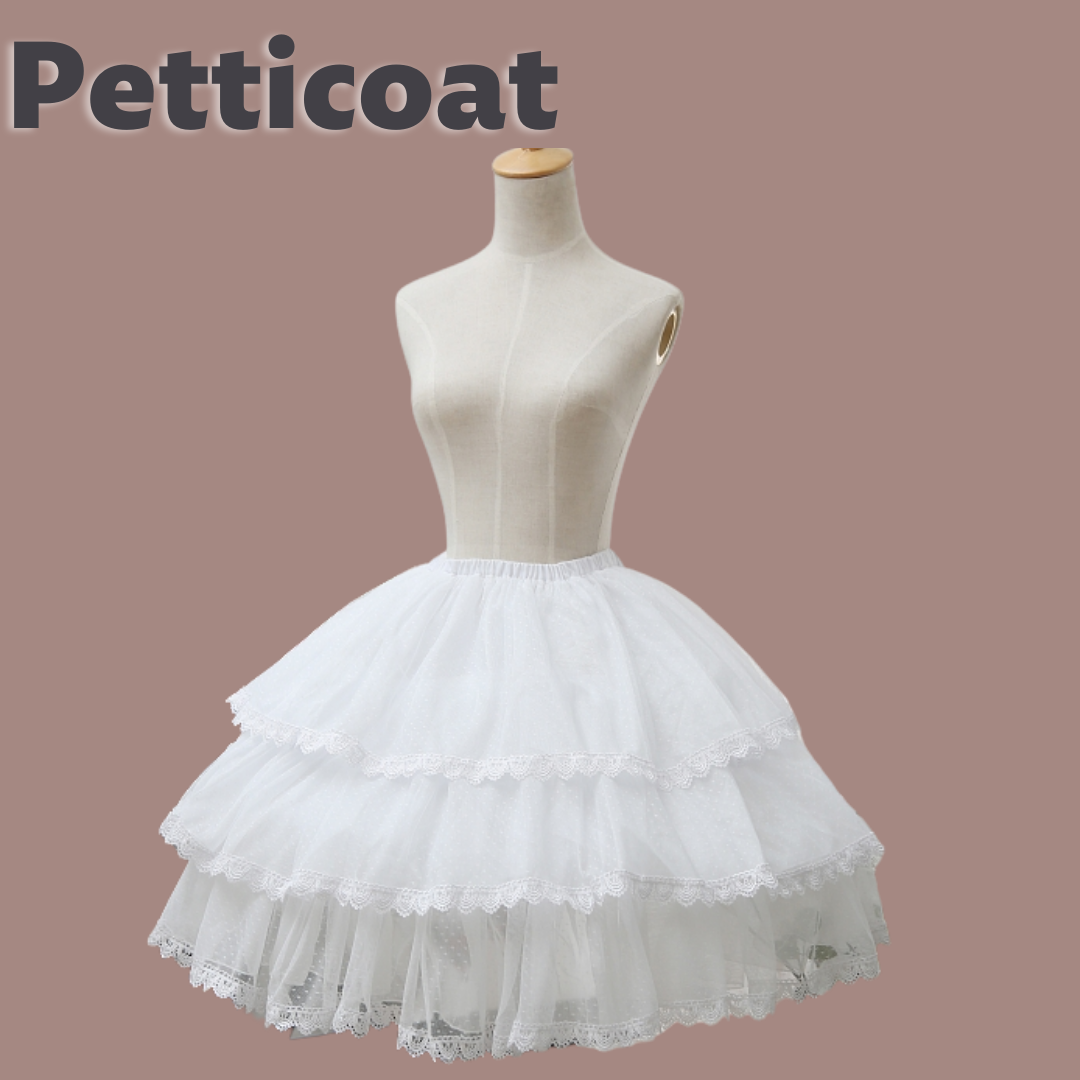
They're usually made of tulle, polyester, or organdy that's been gathered in layers. More layers of the materials, as mentioned earlier, will result in a poofier petticoat. A petticoat made of stiff tulle may produce a nice amount of poof on its own. However, when wearing petticoats made of softer materials (such as organdy), it may be necessary to wear more than one petticoat. Tulle petticoats will also deflate faster than organdy petticoats.
There are two different kinds of petticoats: normal and A-lined. The normal-type petticoat will have poof ranging from tiny to extreme Angelic Pretty-styled cupcake poof. A-line petticoats are most commonly seen in Classic Lolita. There are also longer ones that are widely used in the Aristocratic style.
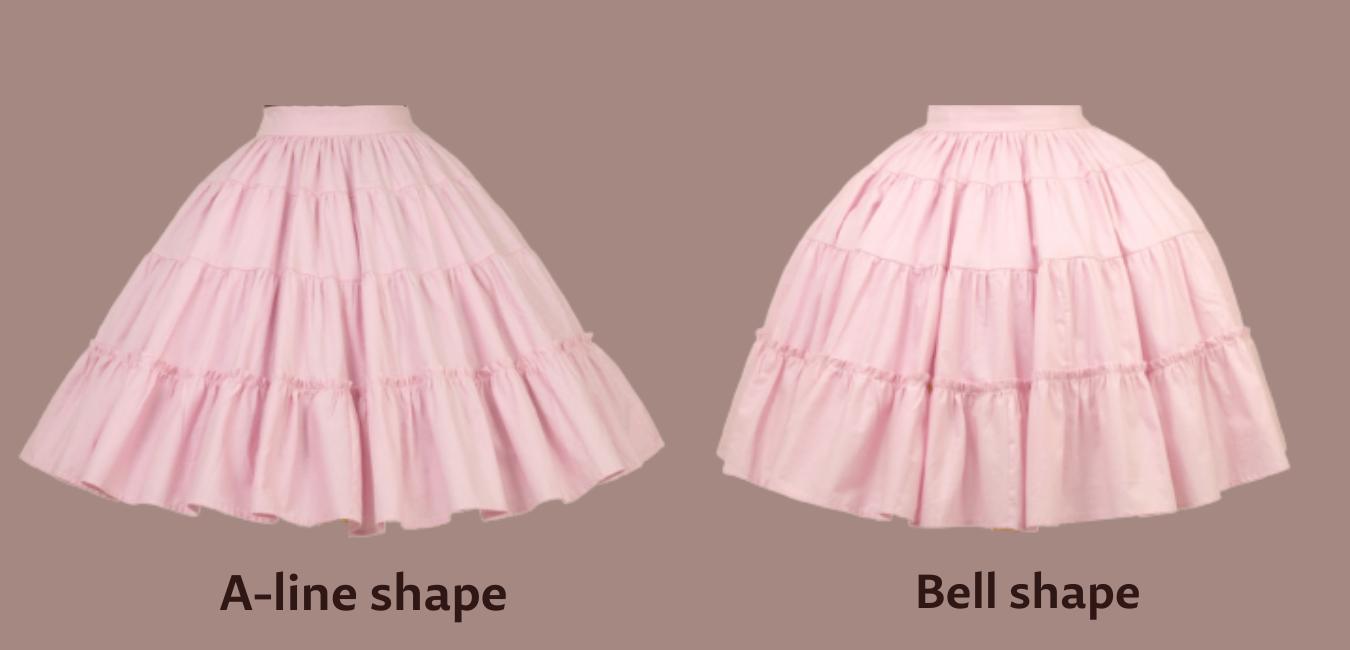
Some people believe and argue that Casual Lolita can be worn without a petticoat.
If you want to know more about petticoats or how to buy one, you can find more information on this blog.
Bloomers
Bloomers are underwear designed to be worn with petticoats. They can be either short or long, and some people use them for warmth. In the fall and winter, you'd want them to reach the top of your socks. Some people wear them for the sake of modesty. If someone looks up your skirt, they won't be able to see your underwear.
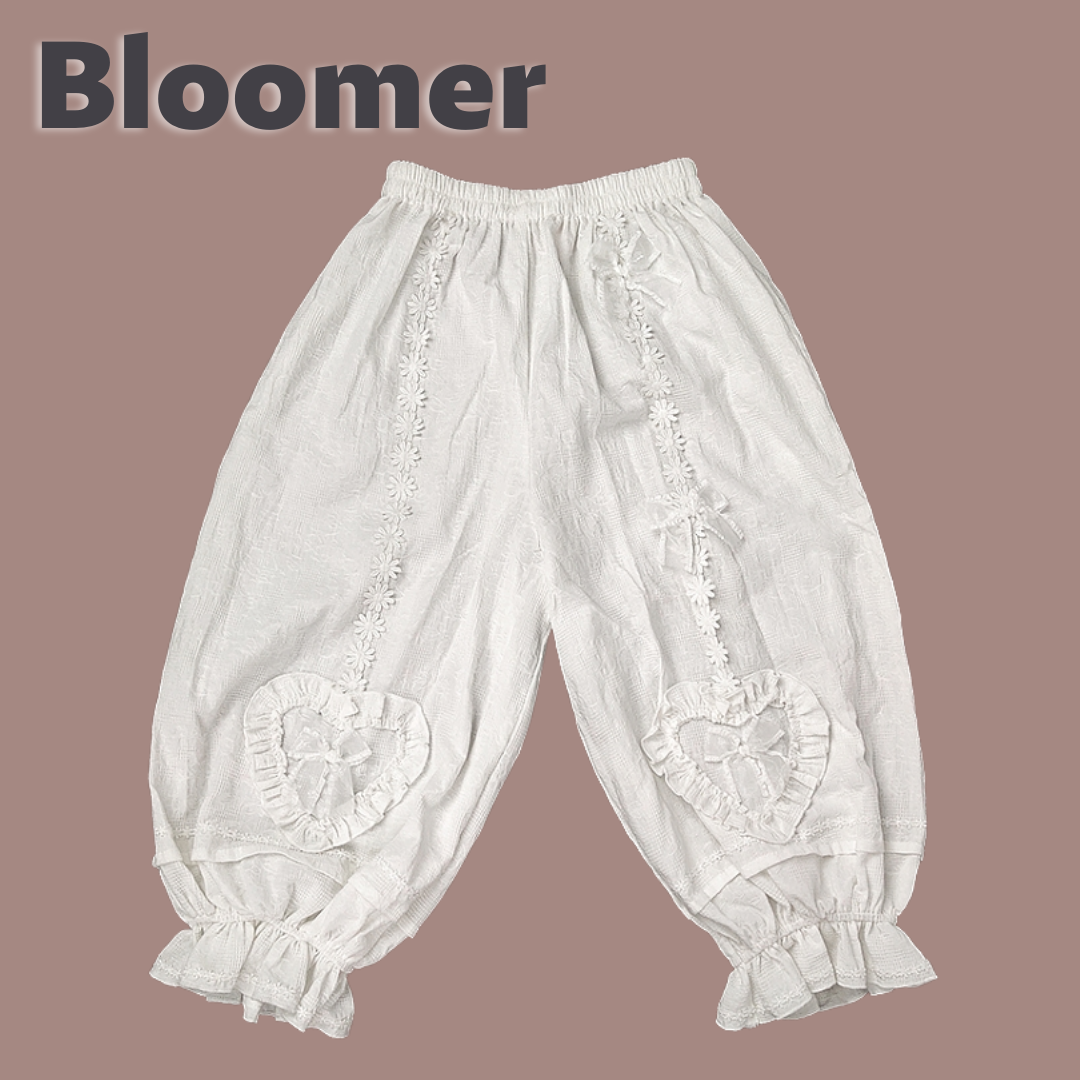
In Lolita's previous coordinates, the bloomers occasionally preferred to peek out from beneath the skirt rather than being completely hidden from public view. This is less common nowadays.
Some people also argue that bloomers can also be worn with Ero Lolita coordinates without the use of a skirt.-By lolitafashion.fandom
So those are all the terms I have for clothing items, and now I'd like to share a few more general Lolita terms with you!
Moving on to legwear, here are a few more acronyms.
OTKs(Over-the-Knee Socks)
Our next term will be OTKs, which is an abbreviation for over-the-knee socks. As the name implies, over-the-knee socks are socks that stretch–or are supposed to–over your knee
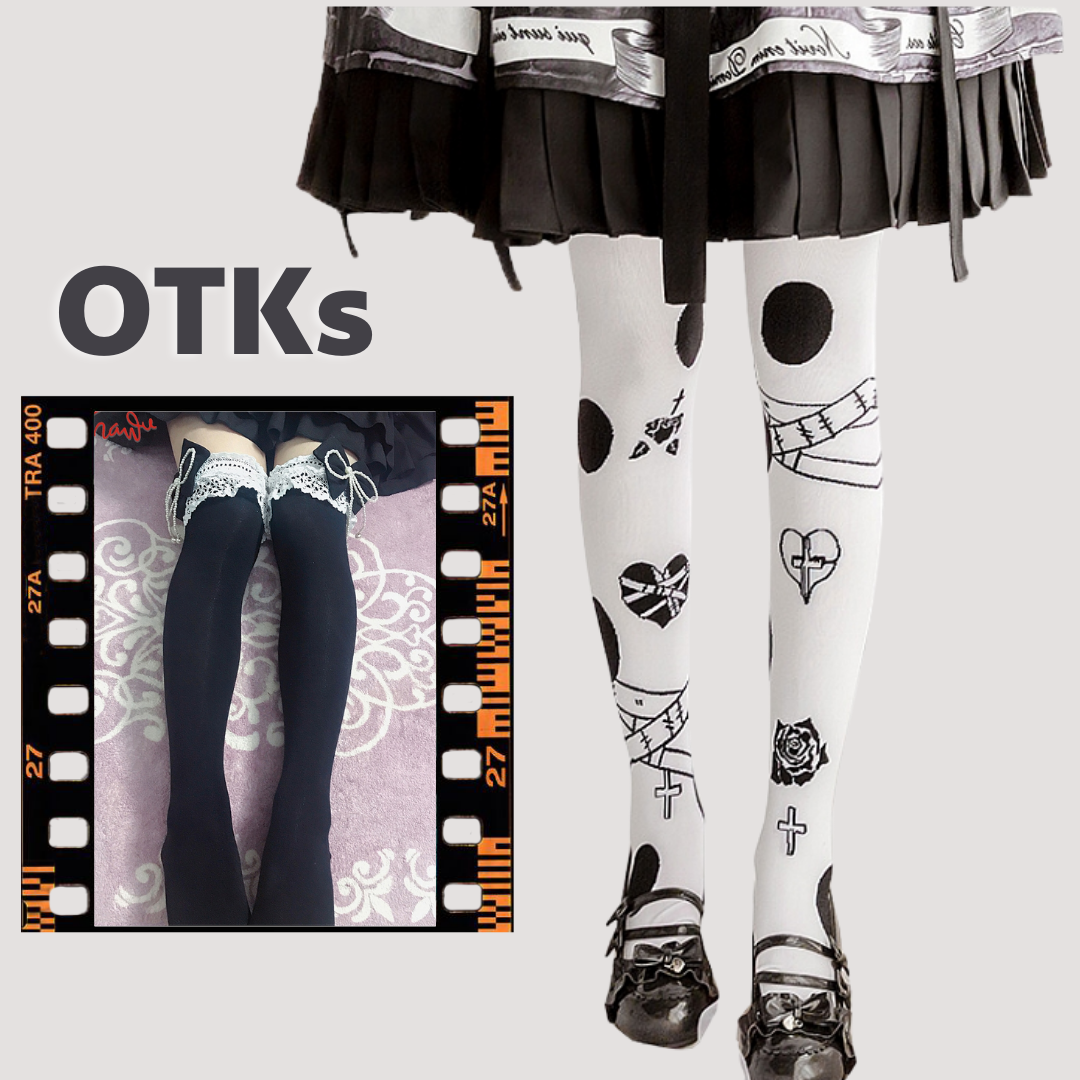
UTKs(Under-the-Knee Socks)
UTKs, which stands for under-the-knee socks, will be our other legwear term. Because they reached just below your knee, you can tell these socks are much shorter.
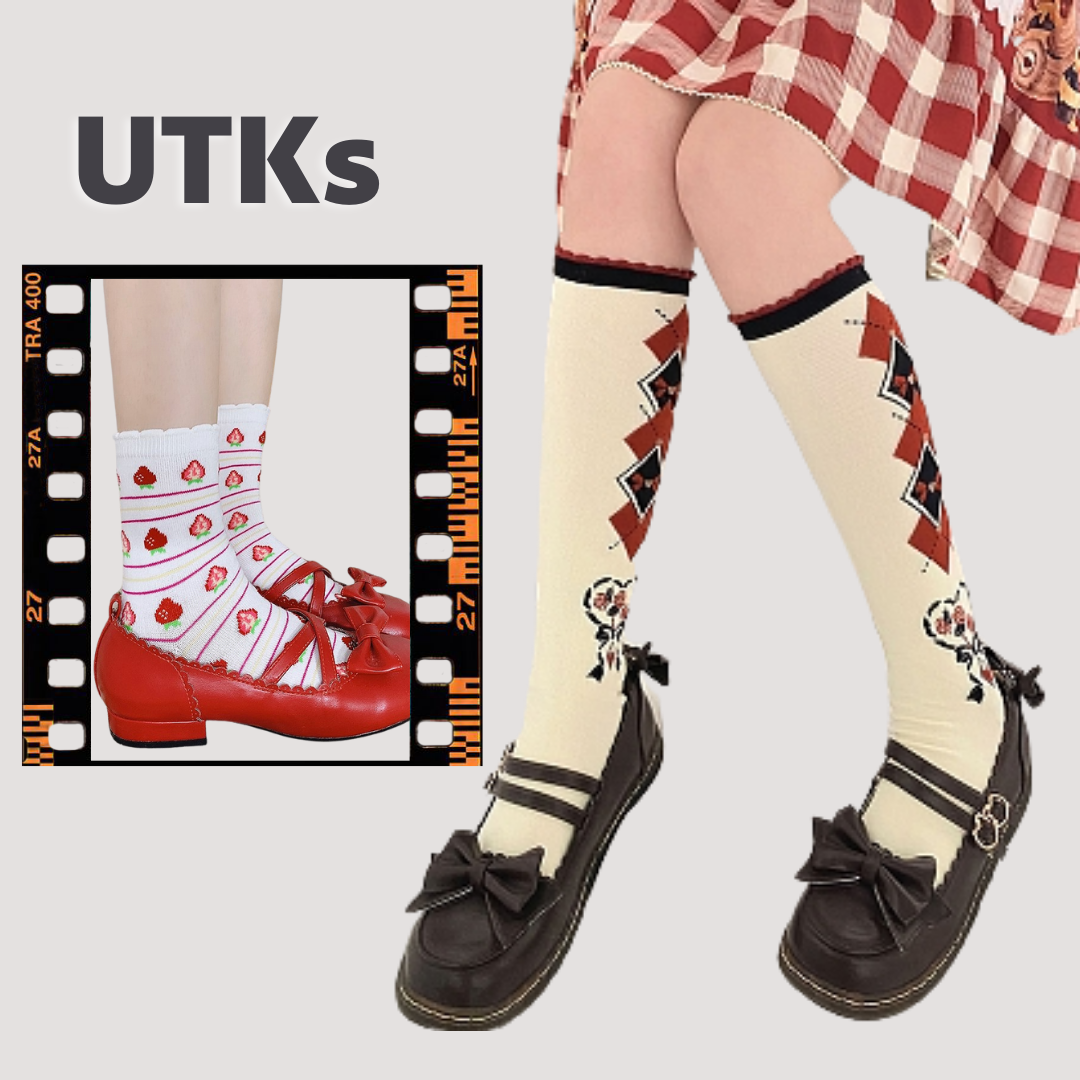
While over-the-knee socks are more popular, under-the-knee socks are great for a more Classic/Old-school Lolita vibe.
Shoes
Lolita shoes are footwear with rounded toes, thick heels, or platforms. If you don't want to wear heels, there are also a variety of flats to choose from.
The signature shoe in Lolita Fashion is the Mary Jane. Mary Jane (also known as bar shoes or doll shoes) is an American term for a closed, low-heeled shoe with one or more straps across the instep that was previously a registered trademark.
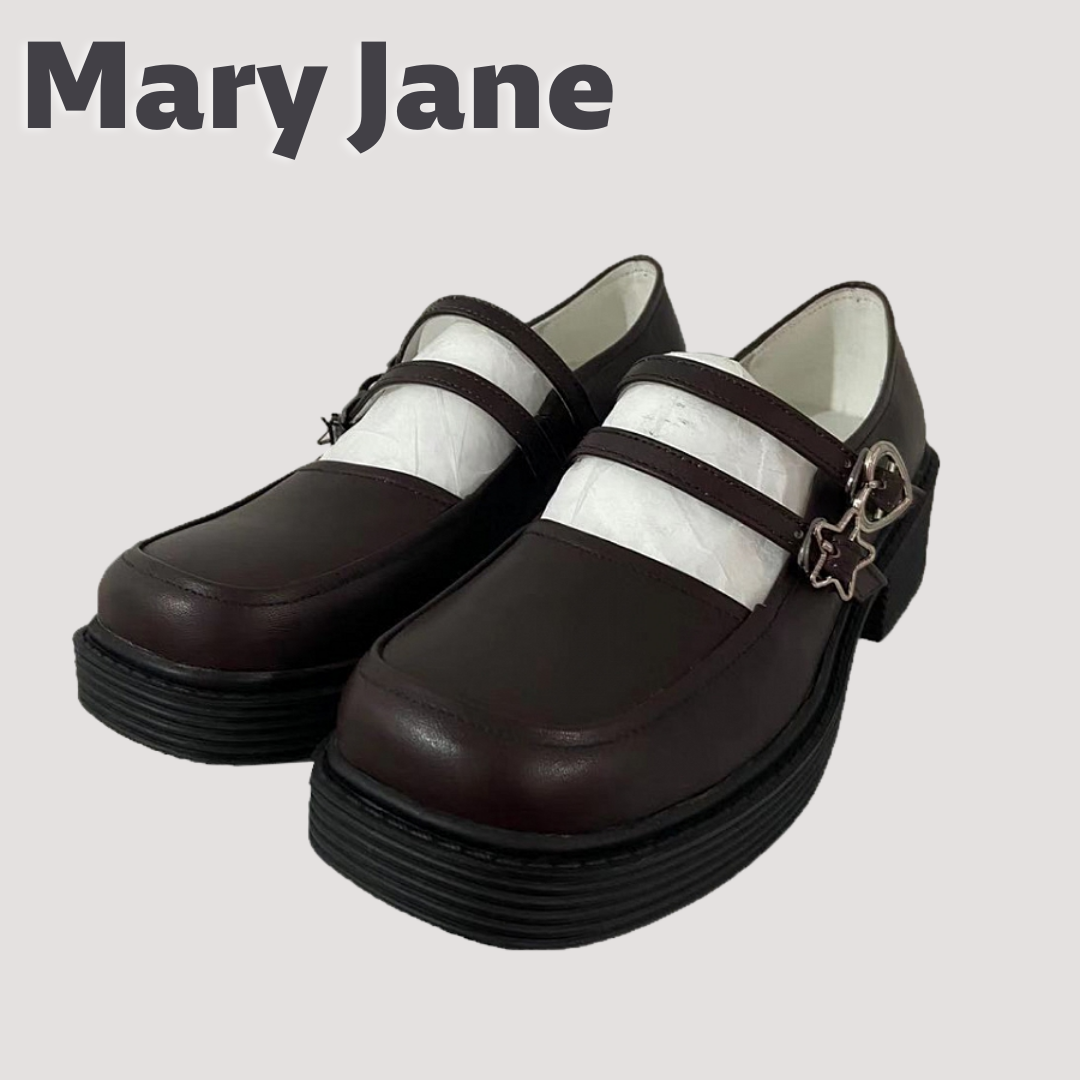
Tea Party shoes, or flat shoes released by Angelic Pretty, are very popular! This is what it looks like:

This shoe style has a low, almost flat heel, straps across the top, and a front bow. They usually refer to this particular style of Angelic Pretty shoe. However, I believe that any low heel classic Lolita silhouette shoe can now be referred to as a tea party shoe.
There is also a type of platform shoe known as Rocking Horse Shoes that is very popular in the Lolita subculture.
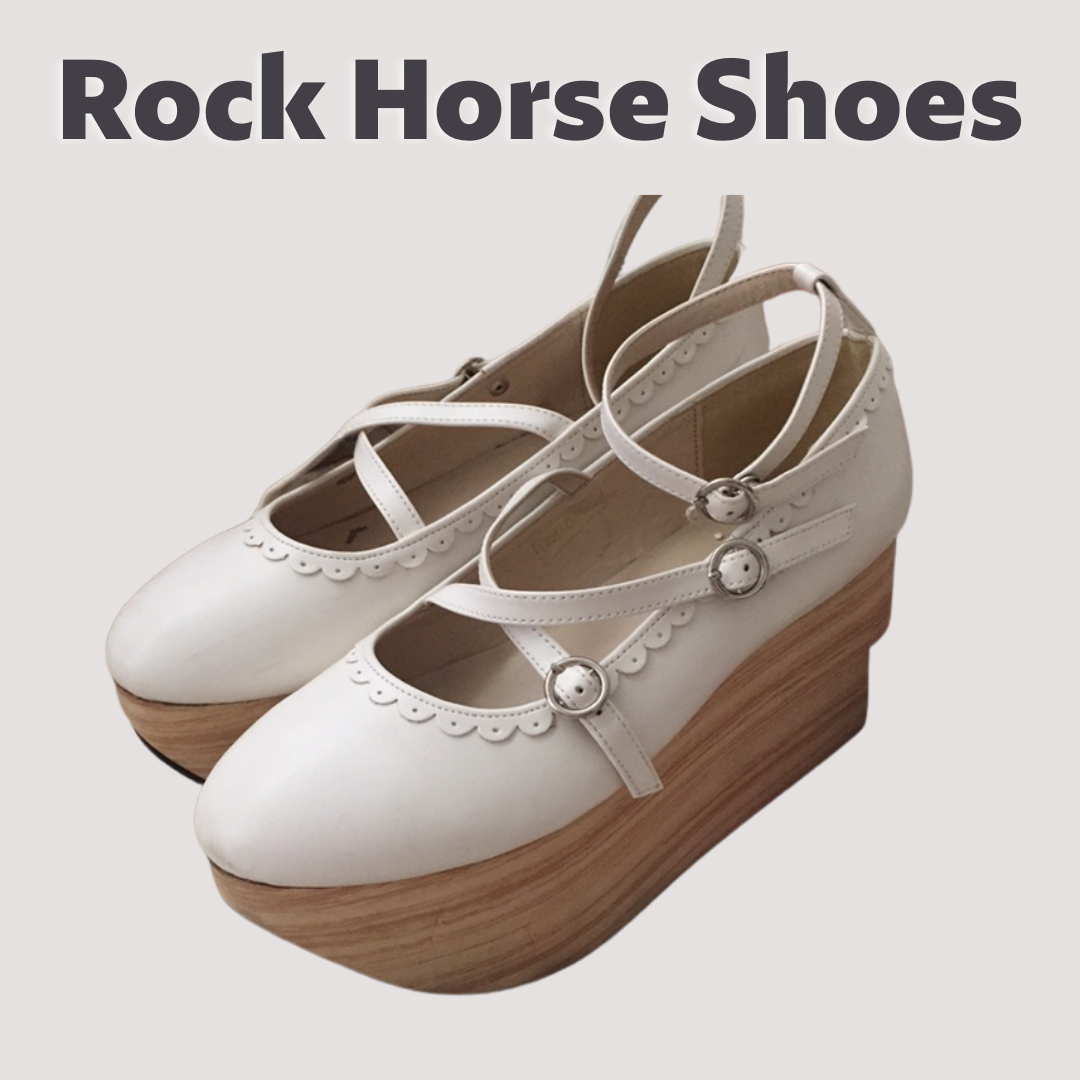
Gyaru shoes, laced boots, Victorian-style shoes, goth platform boots, ballerina shoes, and rubber boots are some other shoe options for Lolita.
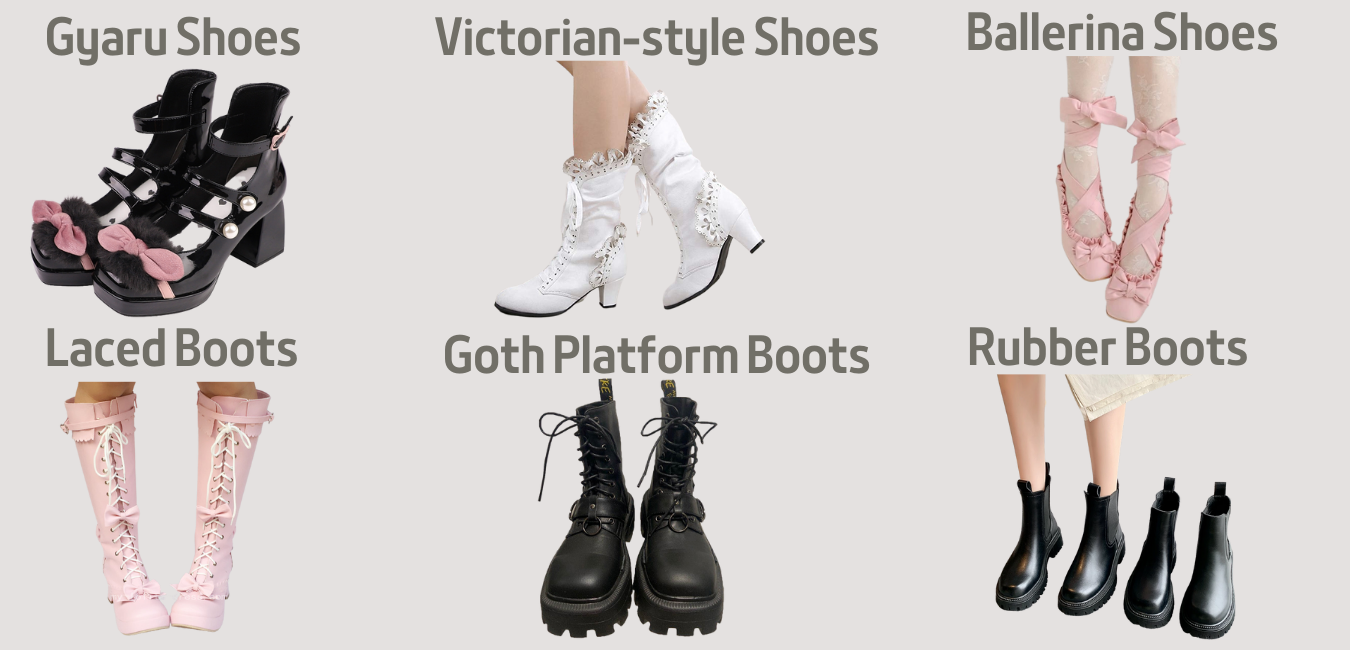
Hair Accessories:
Head bows, headbands, straw hats, hair corsages, bonnets, berets, hair clips, and mini hats are the most common hair accessories. It doesn't matter what kind of hair accessory you use in terms of style. While wearing something on your head is not required, it will help to balance out your outfit.
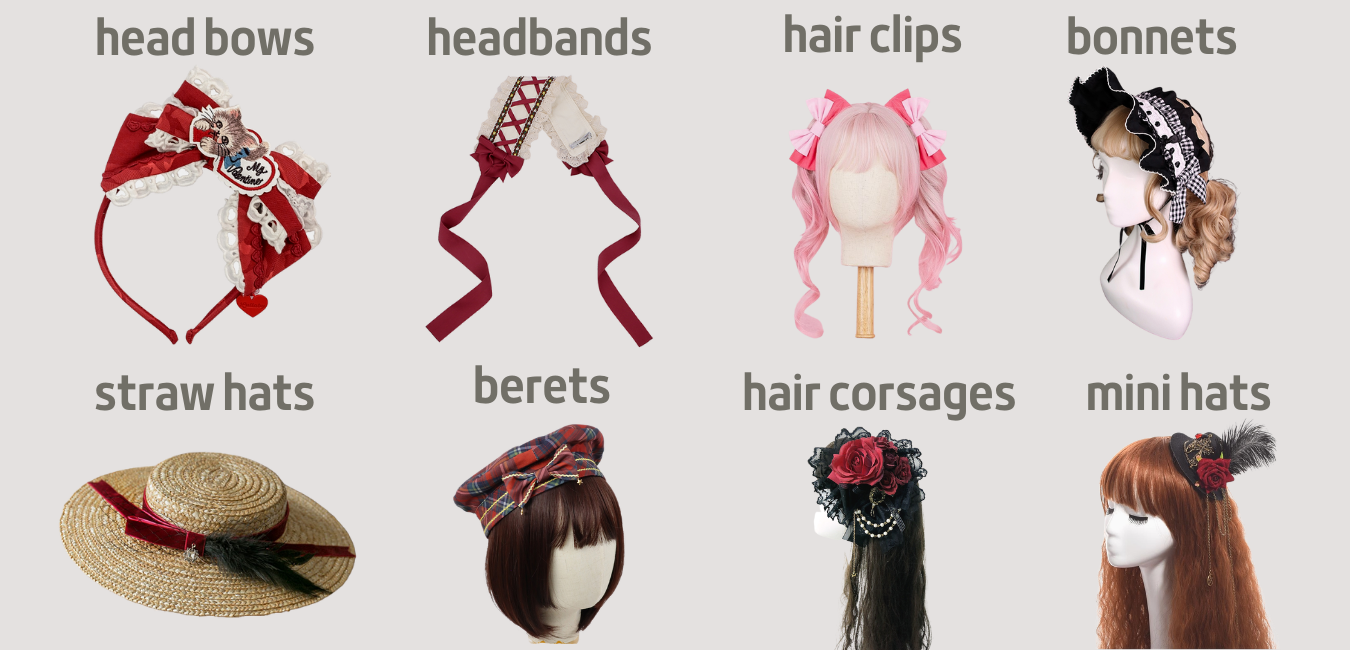
Other accessories
Lolita outfits can be adorned with a wide variety of jewelry and accessories. The items that are worn are usually tailored to fit the current fashion trend.
Sweet Lolita's jewelry is mainly made of hearts, bows, cakes, stars, and animals.
Cameos, roses, lockets, keys, crowns, bird cages are usually associated with Classic Lolita.
Gothic/Punk/Guro outfits are more likely to feature crosses, coffins, bats, and chains.
Wrist cuffs, lace gloves (popular with Classic/Hime Lolita), aprons, ties, jabots, dickey collars, and brooches are some more other accessories.
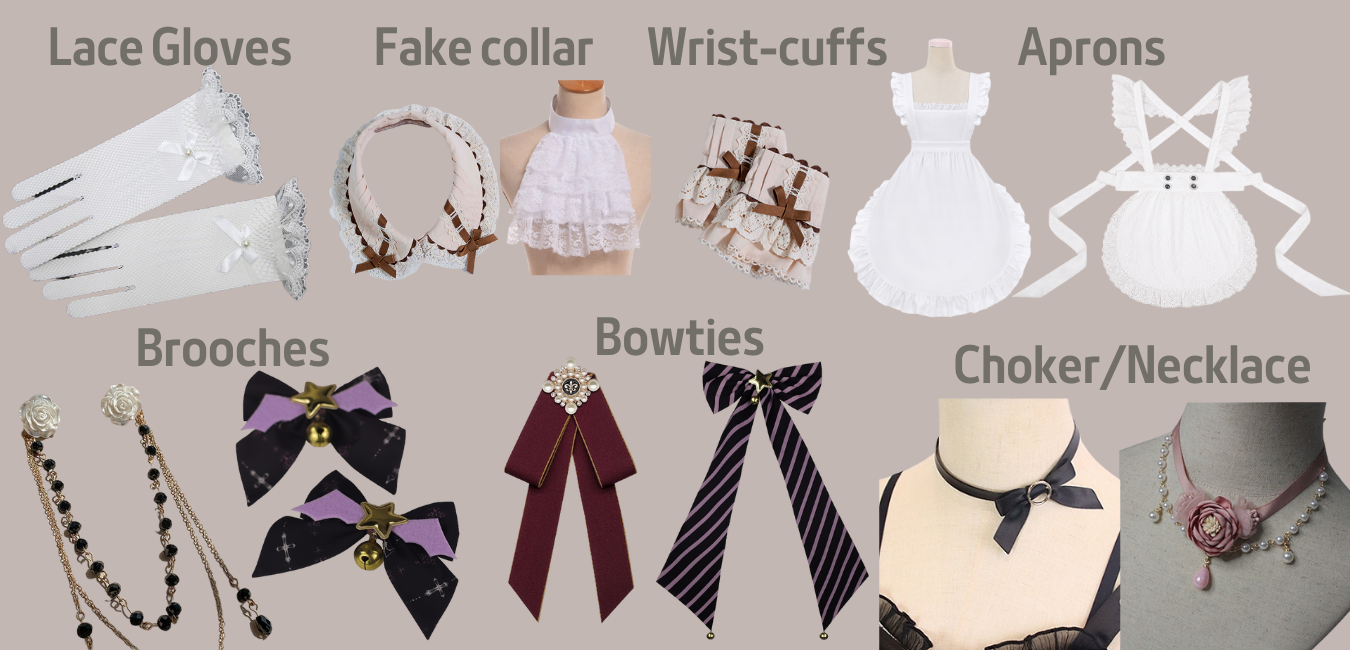
Seasonal accessories include scarves, shawls, mittens, and muffs.
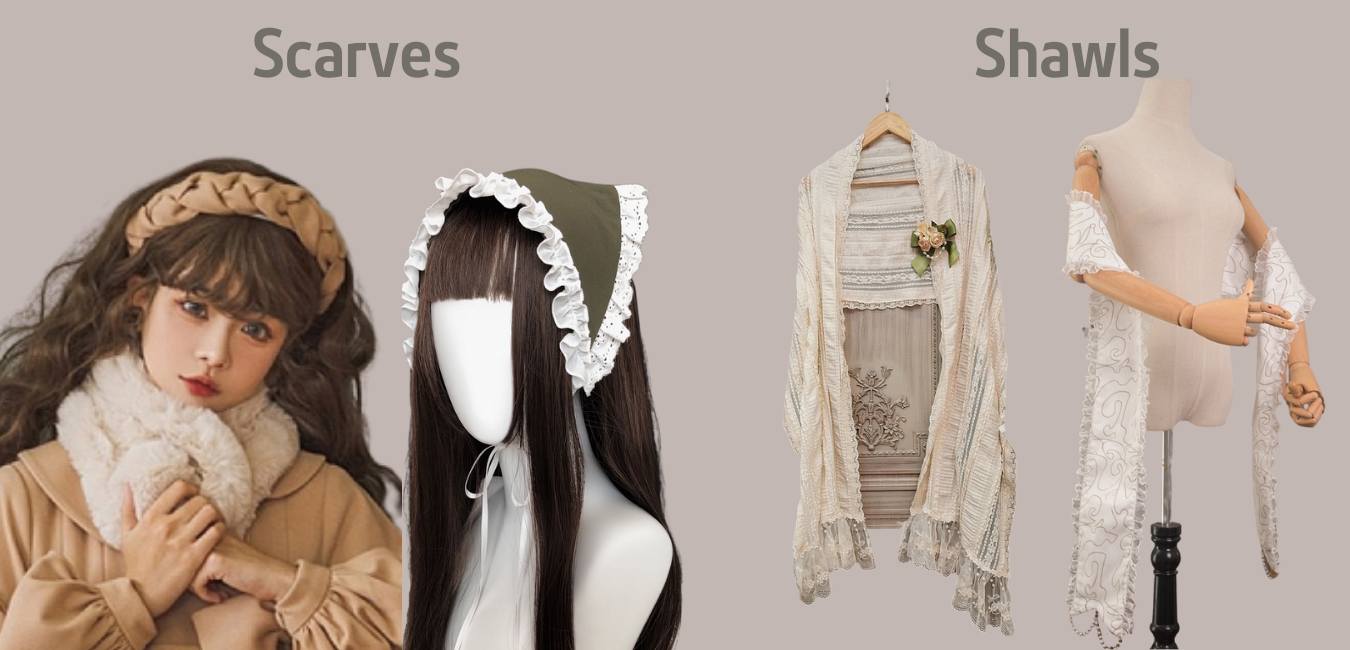
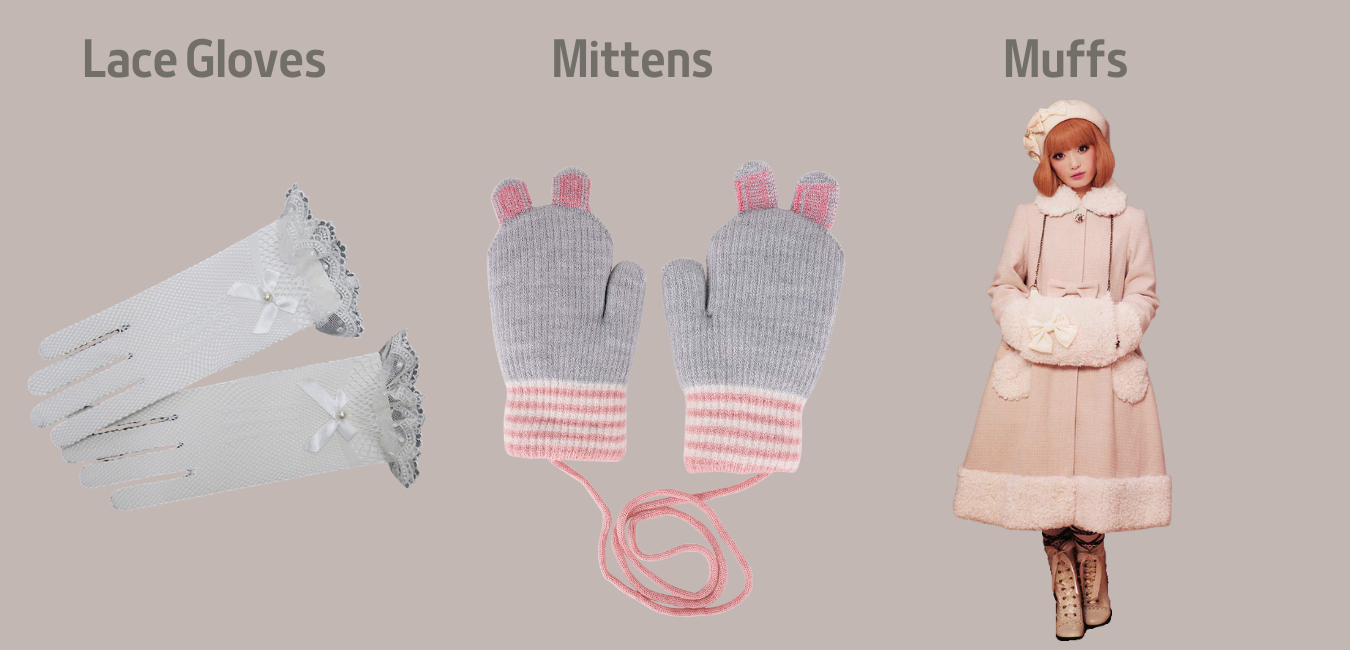
Coord (Coordinate)
The next word is Coord, which is an abbreviation for coordinate. You can use the term "coord" or "coordinate" when referring to any Lolita outfit you've put together.
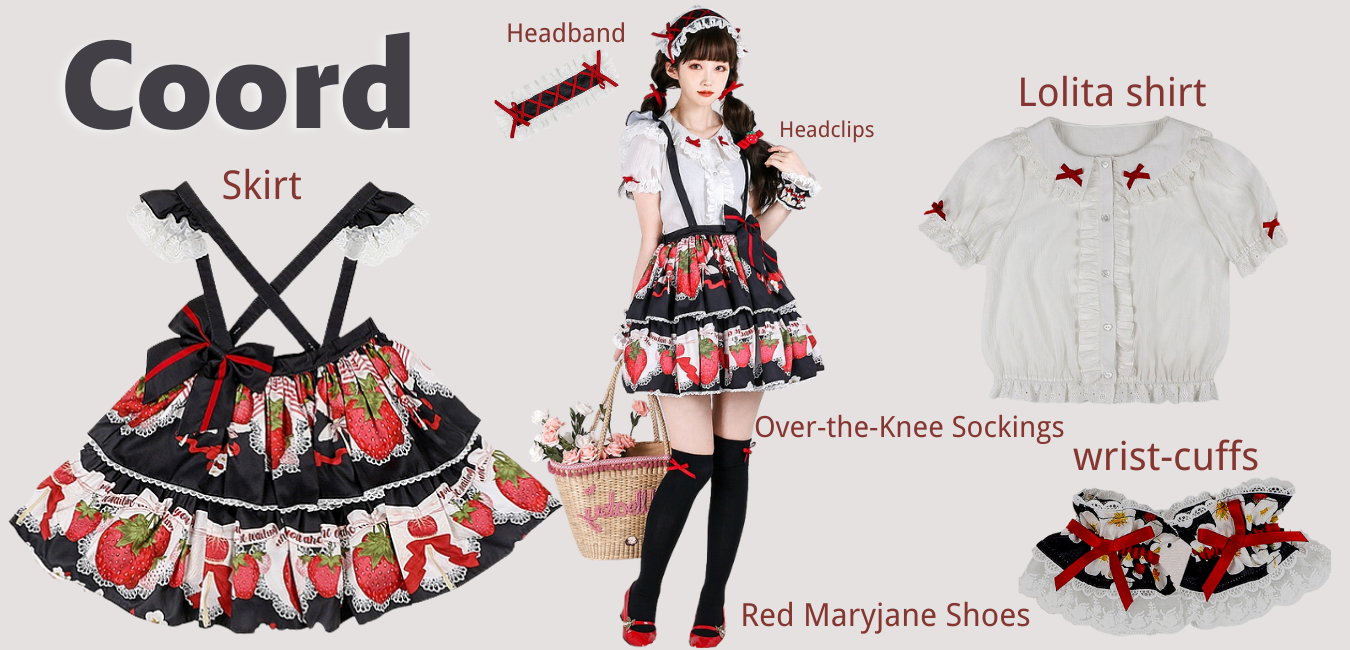
Floored
Floored is another fun term in the Coord, which is when you lay your coordinate out on the floor/bed to plan it and probably take pictures for Instagram!
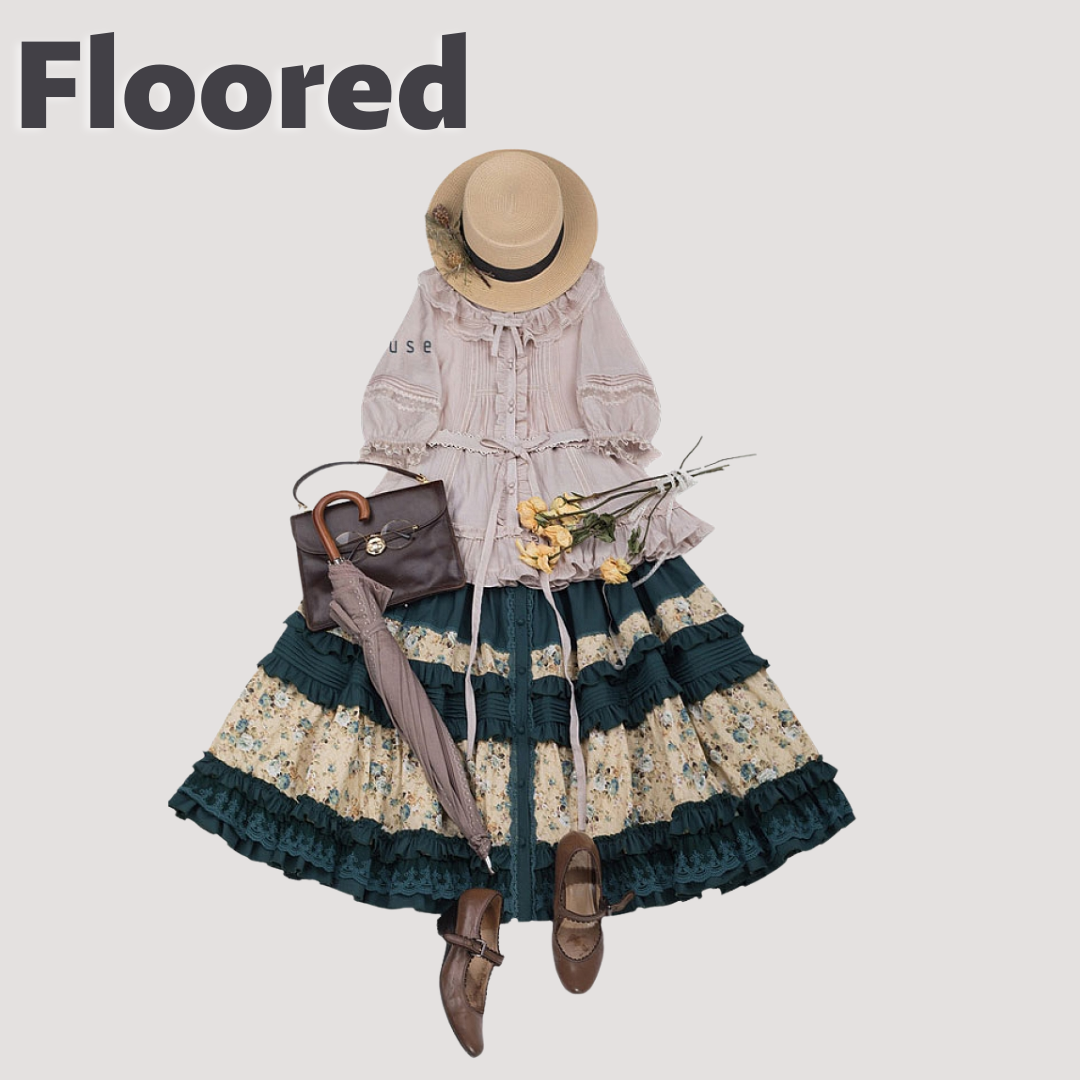
Replica
Replica refers to an exact replica or model of something. It refers to a Lolita-brand dress that is a copy of the original.
Replica Lolita dresses have grown in popularity as an alternative to purchasing coveted designer-brand gowns. However, EGL requested a ban after a representative from Angelic Pretty requested that the topic ceases on both the discussion and sale of replica dresses in 2012. The replica was once a welcomed part of Lolita forum discussions, especially of dresses that were no longer available on shopping services or were not currently circulating second-hand sellers or any other reason. Angelic Pretty is one of several Lolita brands that openly condemn imitations.
Following this event, the topic of replicas became much more sensitive, with more Lolitas condemning the purchase and sale of replica prints, leading to individuals claiming that replicas are on the same level as the Ita Lolita (Poor Lolita). -By lolitafashion.fandom
On the left, Angelic Pretty's "Sheep Garden", on the right, a replica of the same dress:
Tea Party
Tea Party (茶会) refers to various kinds of Lolita events that are held in a venue that offers gatherings. While it's a fun way to interact with fellow Lolita fashion enthusiasts, there is always a dress code and rules to follow, especially when it's an official tea party sponsored by a Lolita brand. -By lolitafashion.fandom
EGL(Elegant Gothic Lolita)
And last but not the least, our final term will be EGL, which stands for Elegant Gothic Lolita!
Designer Mana coined the term EGL, which stands for Elegant Gothic Lolita. Mana is the designer and creator of the gothic Lolita brand Moi-même-Moitié. And when referring to his brand, he used the phrase Elegant Gothic Lolita. However, I believe that EGL, or Elegant Gothic Lolita, can now be used to describe or refer to the Lolita community as a whole.
And now that you've learned these vocabulary words, you'll be able to interact with the EGL community without feeling like we're all speaking a different language!

Thank you so much for taking the time to read this! I hope you learned a lot from this blog. Even if you only know a few words, you can now use them to impress your other Lolita friends or simply keep up with the conversation!





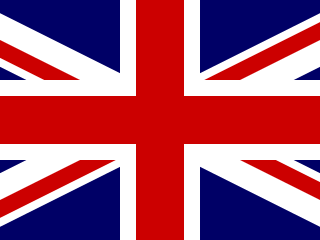


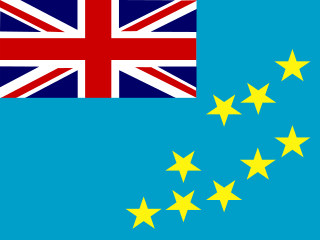

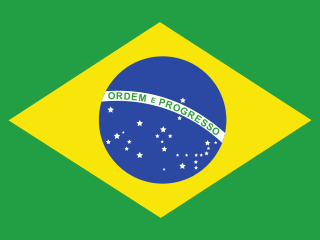
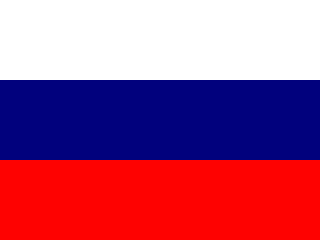
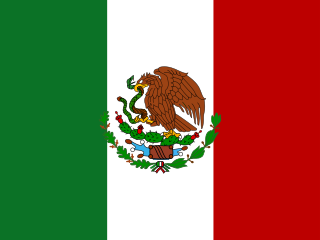
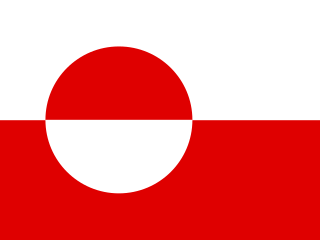
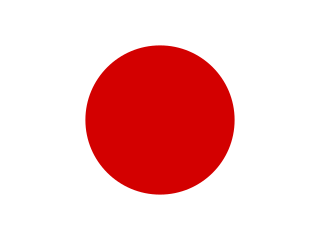
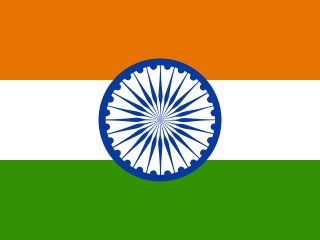
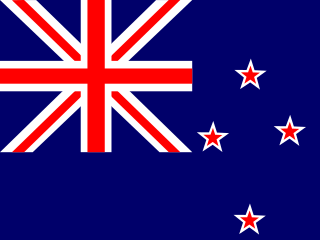

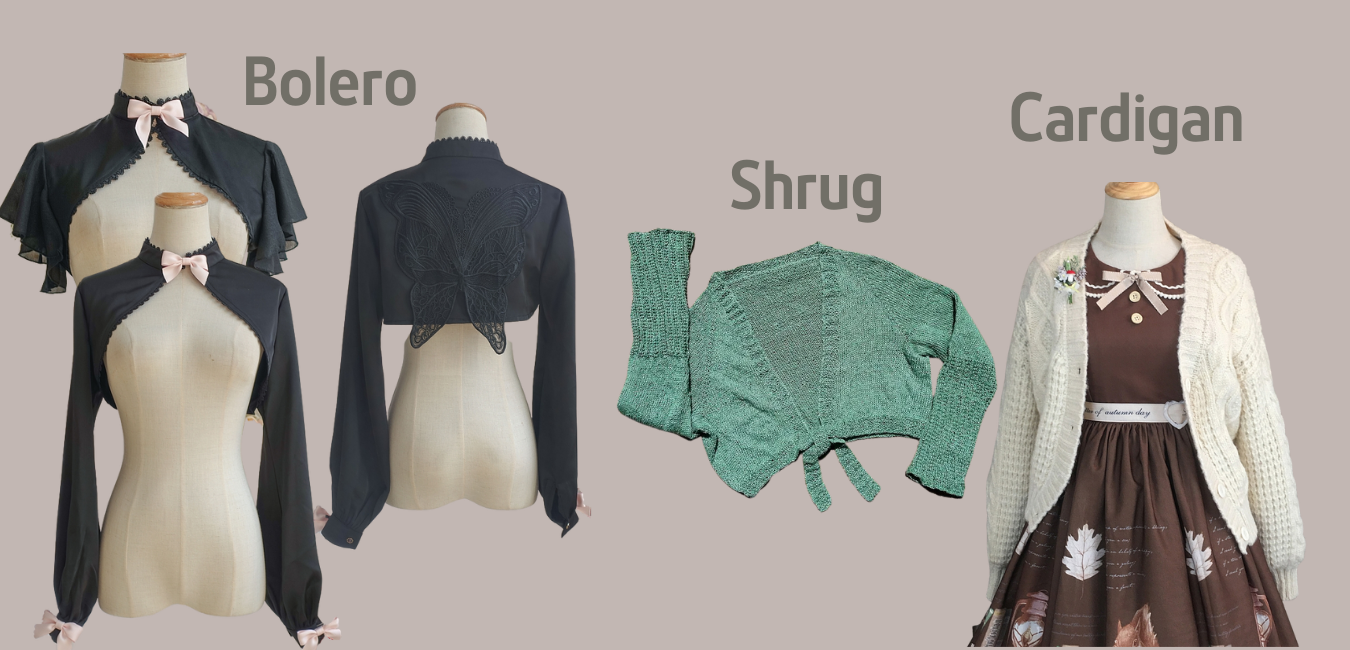
![Report from A.s.Kitsune in Taipei] "Misako & LoliTaiwan" - Tea Party in Taiwan with Aoki Misako - | asianbeat](https://asianbeat.com/files/2013/09/f52439ee80426b.jpg)
